After longing to get one for years and years, I finally gave in and ordered one. Since I'm feeling the hype, I thought I'd post a thread to celebrate and inform.
For those who might not be aware, the Wonderswan was a handheld that isn't quite the successor to the Game Boy. You see, when he was at Nintendo, Gunpei Yokoi was the chief engineer behind the Game Boy. But after the disastrous failure of the Virtual Boy, he left and started his own company. From there, he cooperated with Bandai to spearhead the Wonderswan, which had a similar design philosophy behind it. The Wonderswan initially followed the Game Boy Color and actually sold a few million despite not never leaving Asia; not a bad job of fighting Nintendo's monstrous handheld presence. But ultimately the Game Boy Advance led Bandai to throw in the towel.
Gunpei Yokoi tragically passed away before the system was released, but a direct tribute was made to his legacy through the puzzle game series Gunpey. In fact, the games weren't just named after him, Gunpey had been designed by Yokoi as the Wonderswan's answer to Tetris. I haven't played it myself, but they seem to be pretty well received. When I was looking up recommendations for games to get, I saw a comment from someone calling the Wonderswan "a dedicated Gunpey machine." The latest version is 2017's Gunpeyard Flower Carnival on iOS and Android.
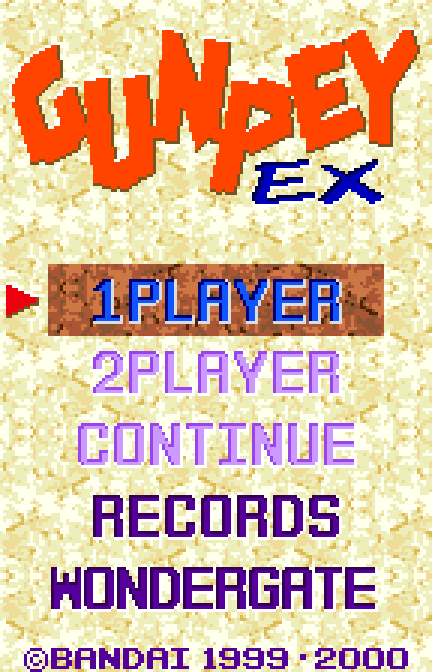

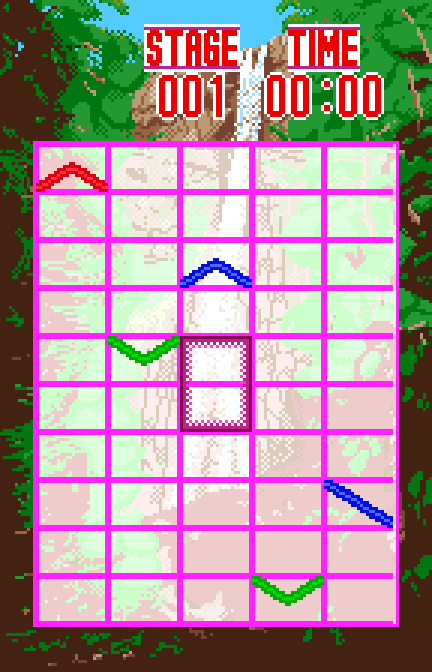
In terms of hardware, the Wonderswan probably perceived itself as competing against the Game Boy, which may explain some of its weak points. The original Wonderswan was monochrome since Nintendo themselves had proved that colour was not a necessity for handheld gaming. Later versions of the Wonderswan soon followed that did allow for colour games while being backwards compatible with the black-and-white ones. As with the Game Boy iterations of the time, the Wonderswan does not have a screen light.
On the positive side, though, one of the immediate things you may notice about the system is that it's got a ton of buttons compared to the Game Boy. You've got two cross-shaped button arrangements to serve as D-pads, plus your A and B. Kind of like the N64 controller, the button layout was designed to be used in different orientations, letting games be either vertical or horizontal. But games were free to use all of these buttons, which naturally can open up some gameplay possibilities.
How did the system do in terms of support? There's around two hundred games for the system altogether, about a hundred each for the monochrome and colour versions. Being a Bandai handheld, Bandai is naturally the biggest supporter, and that means licensed games or games tied to multimedia projects. If you like Gundam and Digimon in particular, this may be the system for you. But they also had a major supporter in Square, who developed a lot of enhanced ports and a handful of original games for the system. These seem to be the most popular games on the system, especially the Wonderswan's version of the original SaGa / Final Fantasy Adventure.
In fact, I had the Wonderswan Color port of Final Fantasy bundled with my system. I didn't even notice that it was being included until I bought it. This port comes with SNES style updated graphics as well as various other gameplay tweaks and additions to put the game more in line with the SNES games.

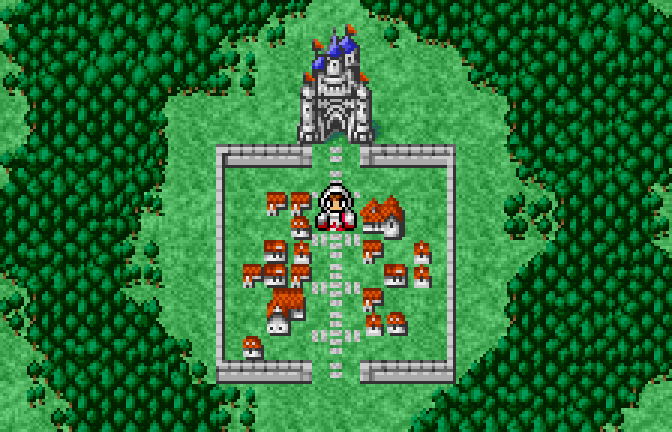
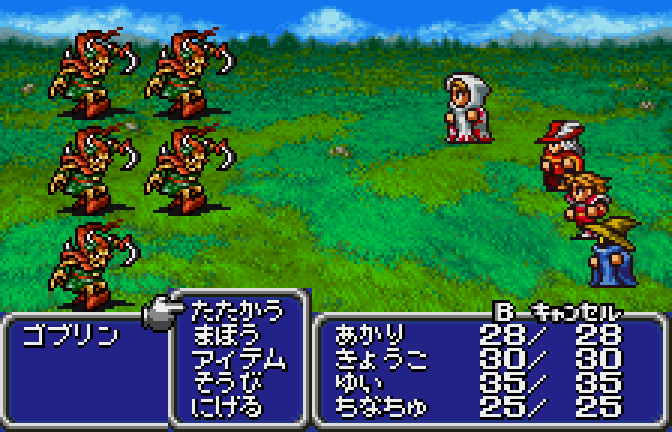
Perhaps you're thinking, wait a second Thammy, this looks familiar. Isn't this the PlayStation version that was included with Final Fantasy Origins? If so, you've got a good eye, because the Wonderswan Color ports of Final Fantasy 1 and 2 were the basis for the versions in that collection.
Also notable among Wonderswan developers are the amateurs. A company called Qute created a software development kit called the Wonderwitch, which was approved by Bandai. With this kit, hobbyists could develop their own games using C or assembly. There was also a separate Wonderwitch Player which allowed someone to play these games without needing the development tools.
A few games were also released in standard form after winning game development contests. Besides being very good, these games weren't produced in large numbers, and I believe they're pretty expensive if you can find them. As such, there's some talk around them. Let's take a moment to highlight these.
One of these games originally developed through the Wonderwitch is Judgement Silversword, a vertical shooter. It's kind of simple, not even having a scrolling background, but is a constant rush of screen-filling action. You may have guessed from the name, but it's probably inspired by Radiant Silvergun, and so features a very similar system where you have different weapon types constantly available. There's also a closely related game, sometimes called a sequel, called Cardinal Sins where the player does not have to beat every level, but is tasked with optional missions to beat every level based on the seven deadly sins. Judgement Silversword and Cardinal Sins thankfully been made available in a few places now including Steam.
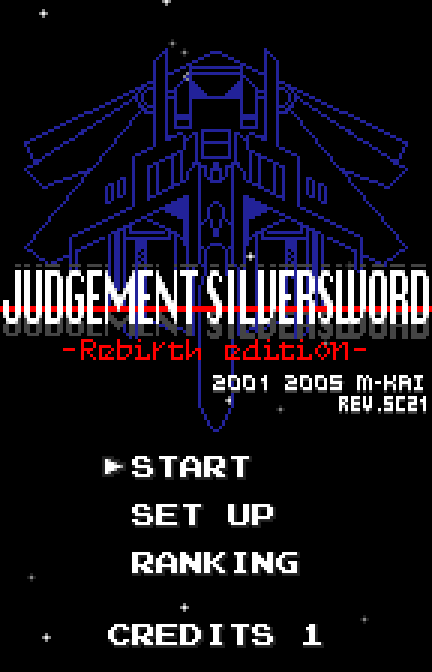
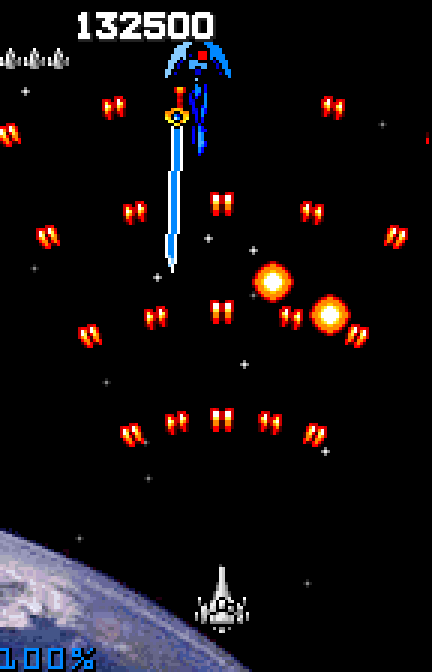
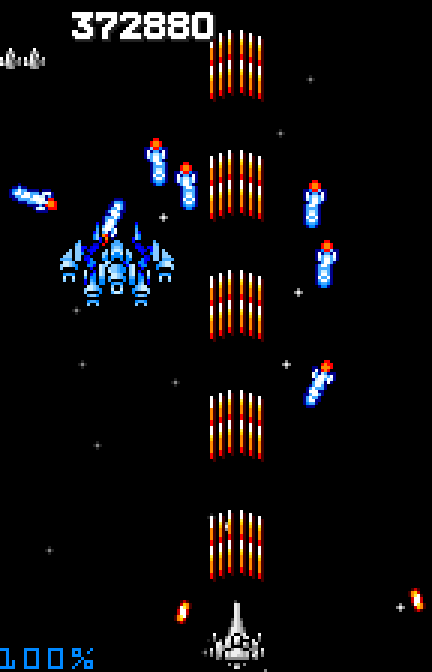
The other game is Dicing Knight, which I also see referred to as Dicing Knight. or Dicing Knight Period. I feel that this game feels spiritually similar to what Binding of Isaac's gameplay later provided. It looks much like the first Zelda and has the player exploring randomly generated dungeons consisting of linked single-screen rooms, but the game eschews the puzzles in favour of a pure action focus, slashing at enemies with your giant sword. It also features a number of bosses.
I think the title is probably a pun. You're not only dicing up enemies with your sword, but there are dice dropped by enemies, and the game is randomly generated.
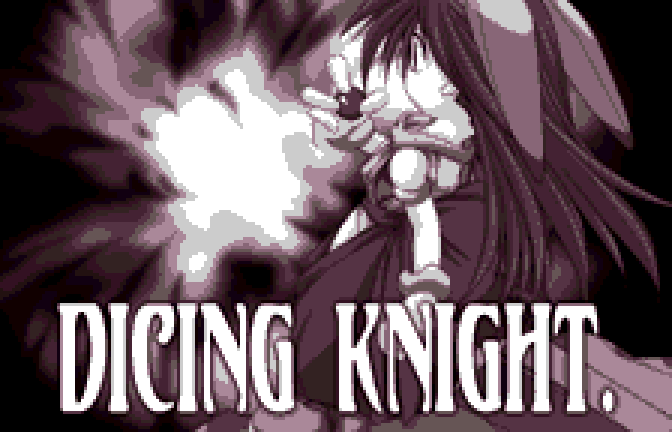


Dicing Knight is still Wonderswan exclusive as far as I know. The developer, Aeju Murasame or "PlatineDispositif", has previously developed a bullet hell shooter called Gundemonium probably inspired by Touhou. PlatineDispositif has continued to make other Gundemonium games and other titles as recently as this year.
Aside from the Wonderwitch, other Wonderswan accessories included the programmable robot toy Wonderborg. There was also a GPS, IR communication, communication with mobile phones and Digivices, and so on.
This is perhaps more trivial than the above, but it's hard to imagine a better opportunity to share this musing, so I'll include it here. Besides the quality of the hardware and its software library, another way that gaming devices might be evaluated is on their legacy, what of them lives on after they're put on the shelf. Is there a legacy that the Wonderswan left behind?
By this measure, I think Bandai's handheld is rather quaint. While it housed some popular series, it generally didn't make them. But there is at least one set of games whose characters and story managed to far outlive the Wonderswan:
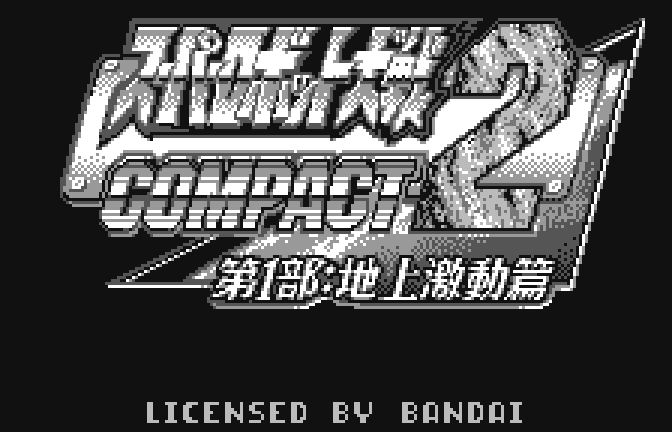
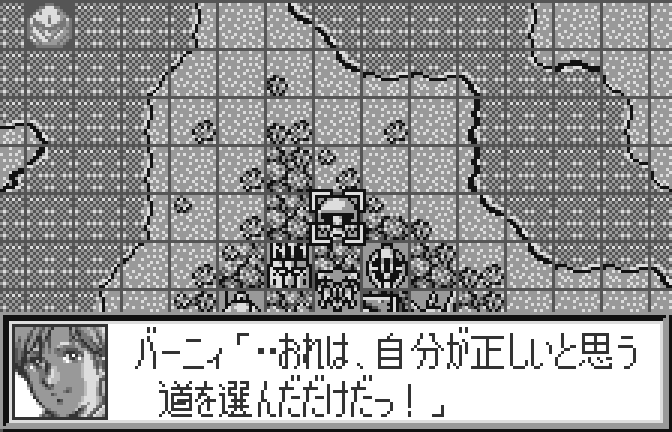
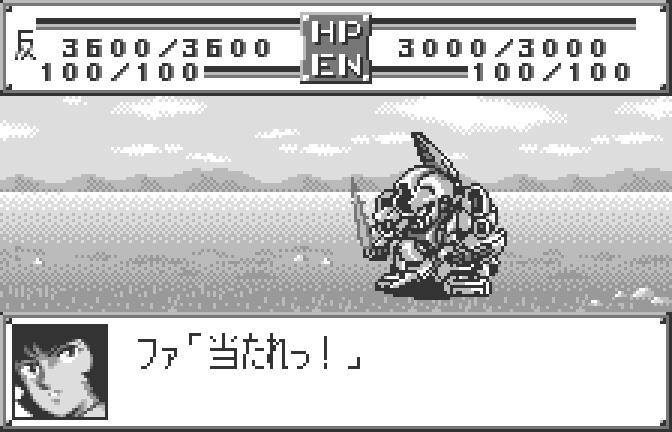
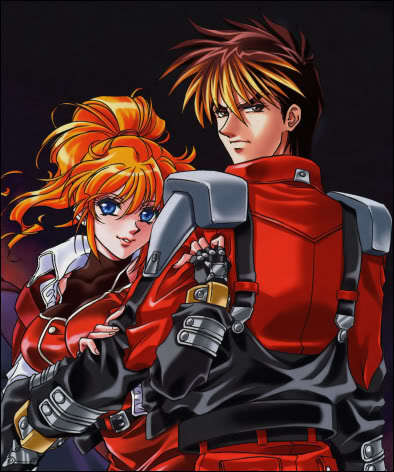
The Super Robot Wars series didn't originate on the Wonderswan, it began nearly ten years earlier on the Game Boy. From there, it began a storyline that it would build over the decade. But when the Wonderswan launched in 1999, that story had been concluded, leaving the series in a strange new territory.
Along with Alpha on the PlayStation, the Compact 2 trilogy for the Wonderswan was one of two new multi-game storylines started in 2000. Compared to the series' other storylines, Compact 2 had a pretty short run, with all three games being released over the course of a year. The games centered on Kyousuke Nambu and Excellen Browning, lovers who find themselves in the spotlight of an attack from extradimensional beings, the Einst. Kyousuke is the protagonist of the first, Excellen of the second, and they come together for the final game.
After the conclusion of the trilogy on the Wonderswan, the characters quickly began to spread. The trilogy was remade just over a year later as Super Robot Wars Impact for the PlayStation 2, not only featuring a huge number of stages due to compiling three games but also having the visuals and sound expected of a PS2 title and some expansion on the story. After that, Super Robot Wars Original Generation on the Gameboy Advance introduced a new storyline constructed as a crossover of Super Robot Wars' storylines. Kyousuke Nambu made an appearance as one of two options for the main protagonist, although the Compact 2 storyline and the Einst would not appear until the sequel a few years later.
The producer and writer of the these games, Souichirou Morizumi, proceeded to allude to this game and its characters in his later works. For example, the main characters of Namco X Capcom were designed based on Kyousuke Nambu and Excellen Browning. The characters themselves along with their mecha have continued to appear in games since, most recently 2019's Super Robot Wars DD on mobile or 2016's The Moon Dwellers for consoles.
That's about all that I'm able to provide for a real Wonderswan history lesson, but I think we can keep this lovefest going. Should I go into why I'm interested in the Wonderswan? What motivates a man into getting a handheld gaming system decades later?
Honestly, I don't remember why I'm so interested in the Wonderswan. There isn't a singular reason that I can point to, unlike a lot of my gamer dreams. I never had the chance to play out the system in person. I wasn't hyped for an international release back when the system was alive. I wasn't even particularly knowledgeable about it at first; there was a period where I mostly knew of SNK through King of the Monsters and Latin American MUGEN websites, during which I tended to confuse the Wonderswan and the Neo Geo Pocket. But I never got the same level of attachment for the Neo Geo Pocket.
I think it's because I perceived the Wonderswan existing in a certain space. Back before resources to learn Japanese were readily available and when Japanese games were more often made without an international release being the immediate target, you could go online and find the right circles where you'd uncover your Langrissers, your Romancing SaGas, your Shin Megami Tenseis, all of these things that made you imagine a whole world of gaming that you've been missing out on. Whereas I felt that the Neo Geo Pocket was dominated by handheld versions of Neo Geo games, with fighting games being the most visible, the Wonderswan seemed more mysterious to me, perhaps more filled with hitherto unknown treasures.
But there were a few specific games that I knew of even before I pierced the firmament and entered the upper nerdosphere. Basically, things that I was already a fan of that lured me to the Wonderswan. I'll go over these ones next; perhaps they would have gotten the same reaction out of you at the time.


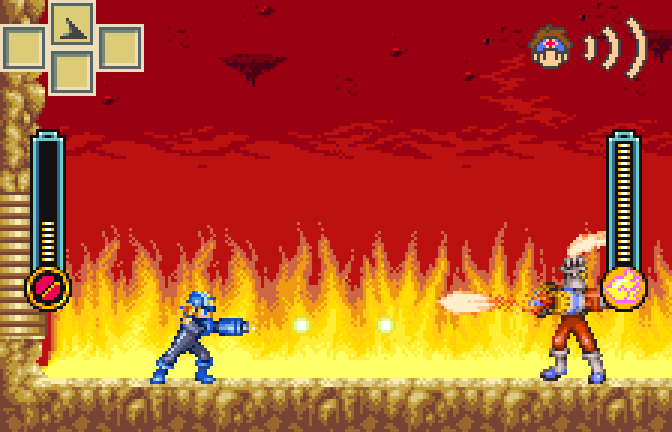
As a long time Mega Man fan and forum guy, I believe that I found out about Mega Man Battle Network's announcement when I was on a Mega Man forum. I had seen Mega Man spinoffs in other genres, but seeing that the new series was this card collection action RPG game that didn't really resemble anything we had seen before was surprising, and perhaps a little worrying. While the Battle Network series was successful and I think it's proved itself to be good in its own right, those of us who were familiar with the platformers couldn't help but imagine what the series would have been as a platformer.
Released in between Battle Network 3 and 4, Rockman EXE WS feels like the realization of what we had imagined, a remake of Battle Network as a more typical Mega Man platformer. You jump and slide like in the classic series, but the game makes use of the Wonderswan's second D-pad to let you equip and use up to four battle chips at a time, similar to the original GBA RPG. While most of them are interpreted as one-time use items here, some such as swords are toggles that replace your basic abilities. Program Advances are also available by selecting particular chip combinations. While it's primarily a based on the original game, it uses a version of the Style Change system found in Battle Network 2 and 3 instead of elemental armors.
About a month after Rockman EXE WS, Capcom released Mega Man Network Transmission for the Gamecube which featured very similar gameplay. I think that one focused on an original story but similarly featured a large number of bosses and enemies from earlier games, and presumably it had more content. If I recall correctly, I actually got Network Transmission because of my interest in Rockman EXE WS, but I still remained more interested in Rockman EXE WS afterward.

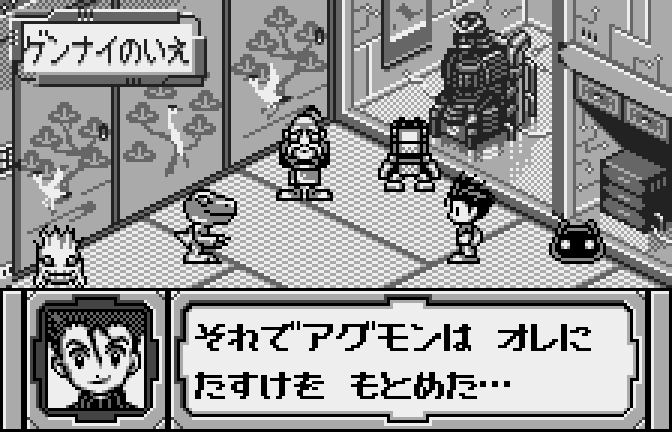
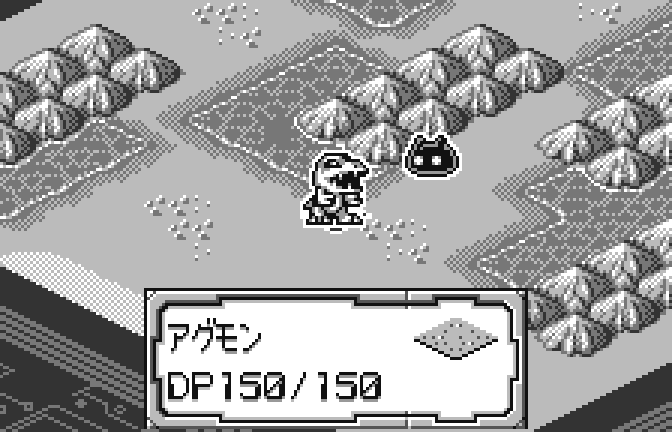
The pictures above are from Digimon Anode Tamer, which was the counterpart to Cathode Tamer, and was later released as one cart that could choose between the two versions - I think the latter was an English only release for Hong Kong, but I'm not totally sure about that. At any rate, this strategy RPG game was part of a series starring Ryou Akiyama, later including Tag Tamers, D-1 Tamers, and Brave Tamers, which I think were all more along the lines of JRPGs.
I'm not too familiar with any of the games individually, but I was familiar with Ryou. See, Ryou had significant cameo appearances in the Digimon anime, and was notable for appearing in both Adventure 02 and Tamers despite those two being in different continuities. According to the head writer of Tamers, this was due to the existing popularity of the character in Japan.
(Damn it, Konaka. What the hell happened to you?)
Here's a summary of Ryou's story as I understand it, for those who may not have looked into it before.

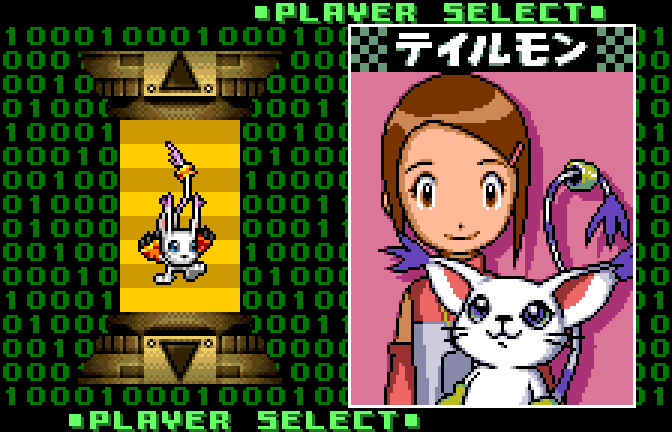
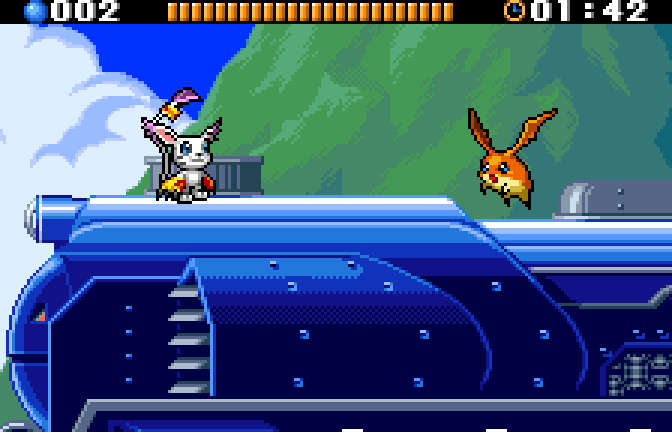
This is much less interesting than I'd above, I'd say, but still something I was aware of at the time. Digimon Battle Spirit is a platform fighter, hardly the best of its breed, but a pretty cute game anyway. While Digimon Battle Spirit and Digimon Battle Spirit Frontier were ported from the Wonderswan to the Gameboy Advance for international release - I don't think these ports ever released in Japan - there's an enhanced version of the original that remained in Japan and thus remained Wonderswan-only. As far as I know, it's a fairly meaty upgrade, with inclusions like Seraphimon, Orphanimon, Beelzemon, and Dukemon Crimson Mode.
These are the ones that stick out from when my weird attachment to the Wonderswan was forming so many years ago. A thousand wistful thoughts later and I had finally ordered one. But while my knowledge of the Wonderswan and its library had grown, it's not to the degree that one might hope. It was prudent that I do some research before proceeding further.
This isn't the first time I've bought games well after the end of life of their system, but I don't do it nearly so often that I'd could call myself a retro collector in good conscience. So maybe some of the concerns I faced are simply innate to the experience of hunting for old games rather than specific to the Wonderswan, but they were the issues that I faced nonetheless. One of those concerns is that a number of games on the system don't need to be found here, perhaps because they were ports from somewhere else or because the games had remakes elsewhere. Judgement Silversword's on Steam and it's not expensive, I don't gain anything by digging around to get the original cartridge. Another issue is that prices are variable. I don't think most of the things I looked at were too bad, but Super Robot Wars Compact 3 had a few more digits to it than I expected. And, of course, sometimes the things I was interested in just weren't available.
Ultimately, I decided to grab three games for now.
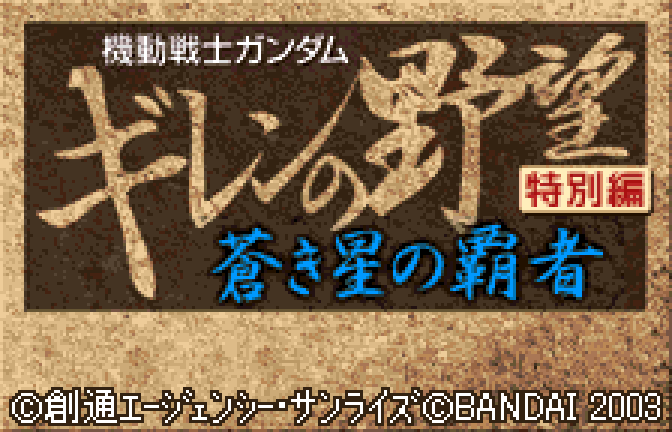
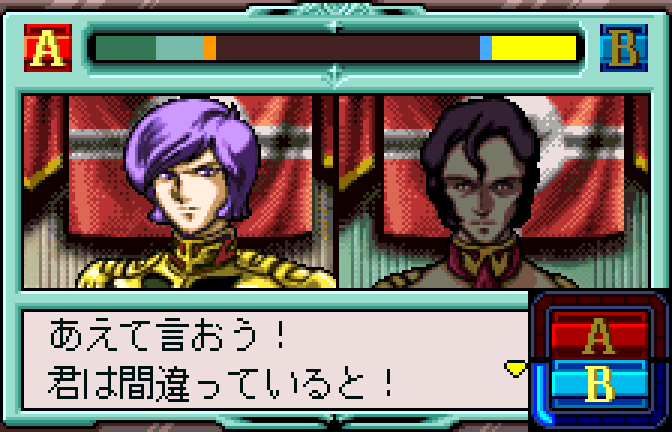
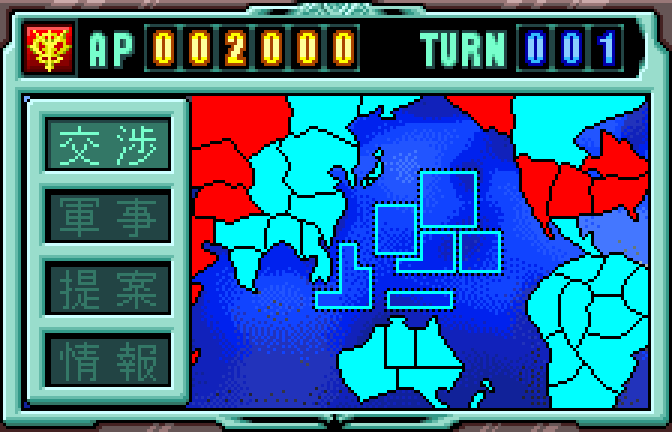
Kidou Senshi Gundam Giren no Yabou Tokubetsu Hen Aoki Hoshi no Hasha, which is something along the lines of "Mobile Suit Gundam: Gihren's Greed Special Edition: Conqueror of the Blue Earth". Gihren's Greed is a series of simulators that play out the canon of the original Mobile Suit Gundam series with the level of detail that you'd expect from historical simulators. Common features of the game involve multiple story routes that allow you to change the story's narrative or follow other versions like the novels, as well as selecting from different factions. Characters are pulled from all sorts of Gundam media in the setting, down to things like amusement park events. I'm a big fan of the Gihren's Greed series, so this was a big want.
At least when it debuted, Gihren's Greed was pretty lofty, perhaps not something easily translated to a handheld like this. The way that Conqueror of the Blue Earth compensates is by changing the scope of the game. You're no longer the supreme commander, but a few steps down the rung. You're only able to play as the villainous Zeon faction, but you can choose between Garma Zabi and M'Quve, whose jurisdictions are different. Besides conflict with the enemy, this adds an element of competition with your allied peers.
There are quite a few features that make this game different than others in the series, rather than simply reduced. As per the above, you have to deal with your peers, which takes the form of conferences. You'll be called for strategic decisions, and while you can take a position on them, you'll also have to pick the right types of arguments in the debate in order to get them to accept that idea. Additionally, the battle system in this is different from the rest of the series. Instead of moving attack units directly on the map, you assign them to carriers, and the carriers are the ones you directly manipulate. Some units, such as Mobile Armors, are larger, requiring you to fit them into the carrier's hanger like Tetris pieces.
The game still seems to be about as robust as expected of the series. Including loadouts and carriers, there are 64 different units on the Zeon side and 44 on the Federation side. Similarly, there are 45 named pilots on the Zeon side and 36 on the Federation side.
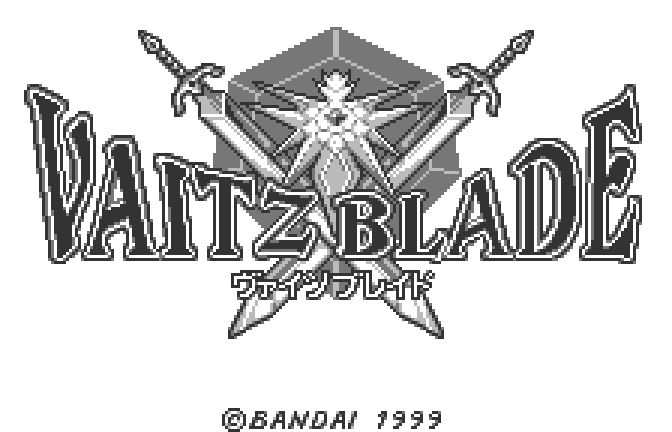
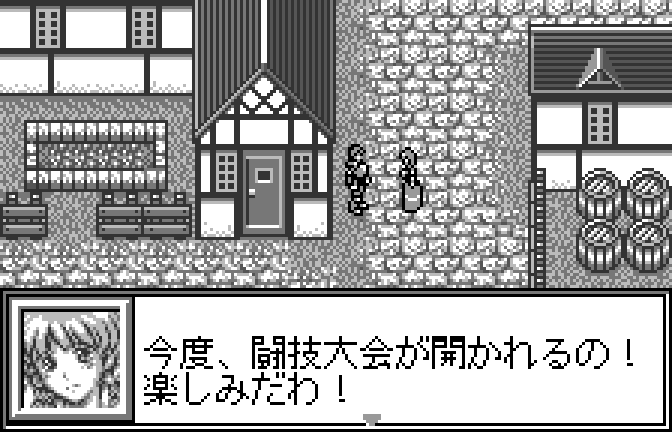

There isn't too much information in the usual places on the other games I got, Vaitz Blade included, so I can't say a whole lot before having played it. At first glance, I thought it was a Dragon Quest styled fantasy RPG, but it actually seems to focus on its monster capture mechanic - "Vaitz" is the name of the monsters you capture and fight alongside. A little oddity is that not all of your characters or Vaitz can act in a turn, and the ones that don't are safely relegated to the back row.
It's black and white, but it also seems to have a number of full-screen anime style stills which are nice to look at.
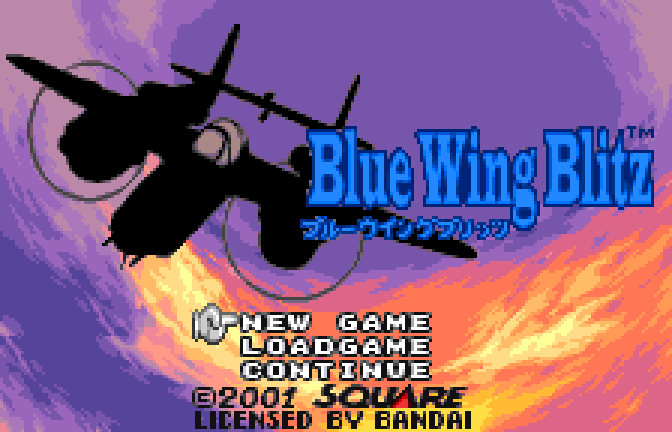


Blue Wing Blitz, one of a handful of Square games exclusive to the Wonderswan. This one was apparently made primarily by staff from the Front Mission team, and seems to be conceptually similar in that it's a vehicle-focused strategy RPG with customization mechanics. However, rather than robots, this one is primarily about planes. Ground units are also present, but even allies are not under player control.
I'm not too familiar with this one either, but it seems fairly complex. Besides different weapons, you also have considerations like altitude, speed, and maneuvers.
That's most of what I have to say about the system, but I did do some research on its library, so it would be a shame not to share it. Since I'll be looking at a significant chunk of the system's library here, let's treat this part of the thread as extra credit.

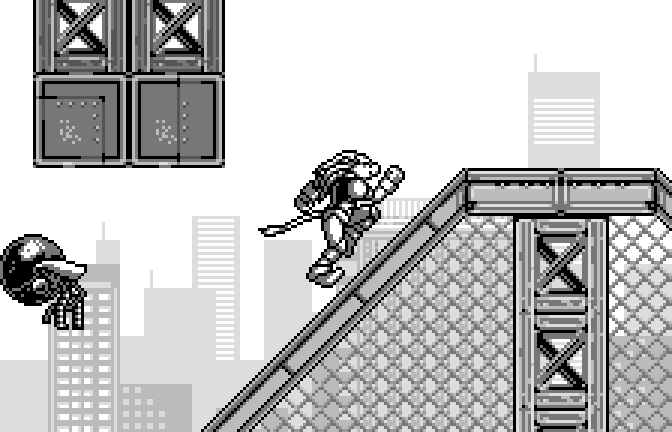
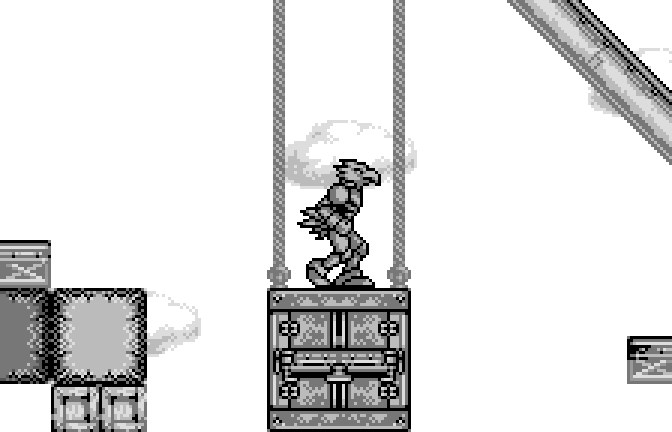
A platforming game where you play as some sort of cyborg beast person and run through obstacle courses. There are ten optional markers to collect, as well as powerups to gain new abilities and increased speed. Seems to be built for speedrunning; it's contextualized as a race, and you see your time at various points during and after the stage. A major annoying feature is that as you take damage, you begin to be frozen periodically with an electric crackle.
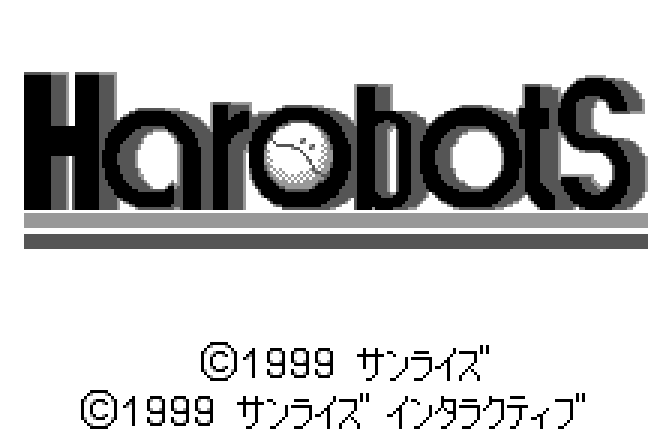
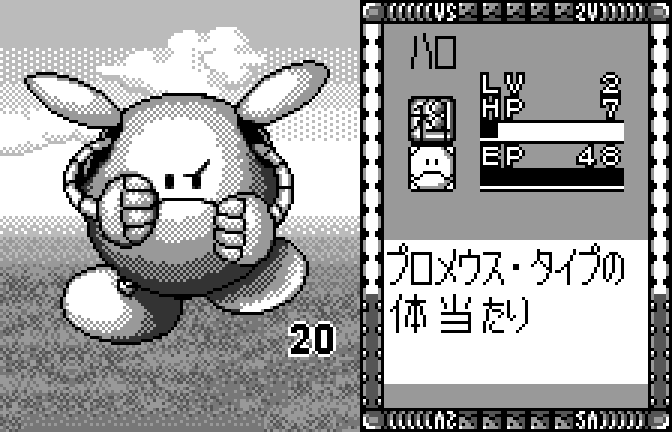

Made during the early days of Pokemon's popularity, Harobots is one of its many imitators. The gimmick with this game is that it's based off of Sunrise's anime, primarily mecha anime. Your "monster" ally is a Haro, the mascot robot from the original Gundam, who takes on the power and some of the features of mecha from these various animes to battle.
The Wonderswan game proceeded to get a number of sequels across Nintendo's handhelds.
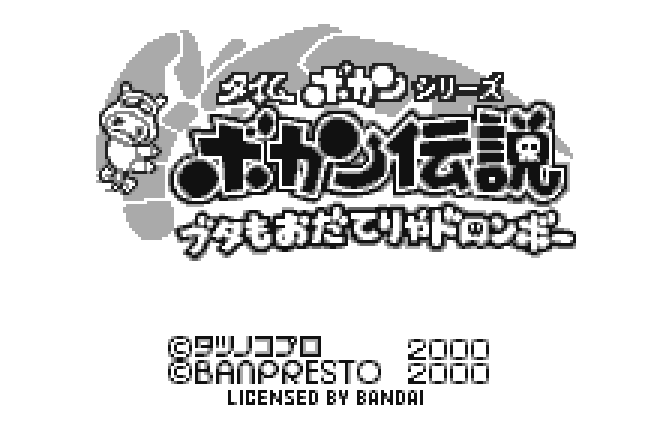
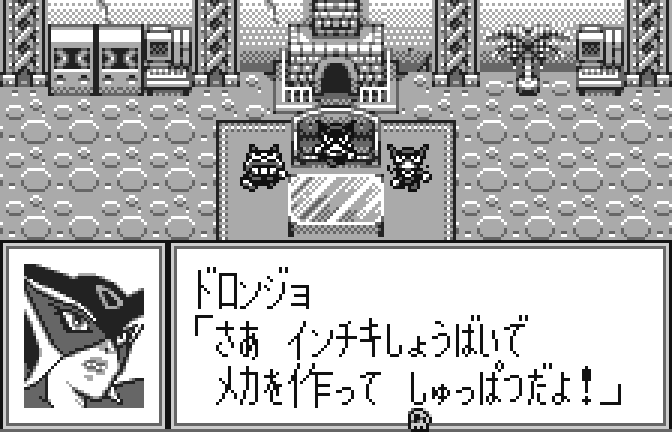

Bokan Densetsu Buta mo Odaterya Doronbou is an RPG based primarily off of the comedy anime Yatterman, but contains content from the entire Time Bokan franchise it belongs to. You play as the Doronbo Gang, the incompetent recurring villains of the anime.
The battles in this game are naturally carried out with giant robots. Gameplay-wise, it seems to distinguish itself from other RPGs along those lines, giving you options to customize your robot and a variety of weapons for them to use.


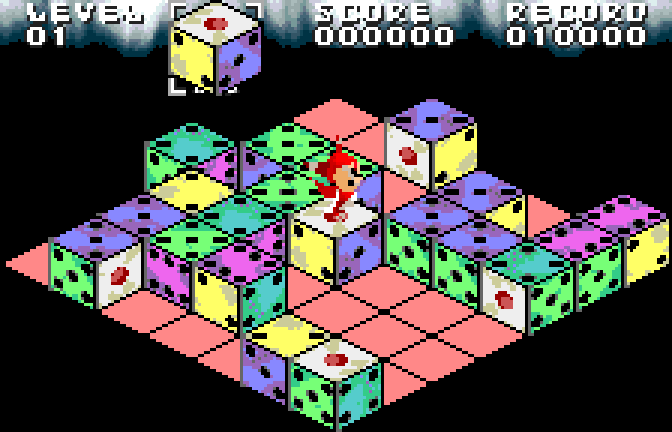
A puzzle game. The player has to match up dice with the same face. They do this by manipulating the dice various ways; climbing on them and rolling the dice with your feet, passing from die to die, or dropping to the ground and pushing them.

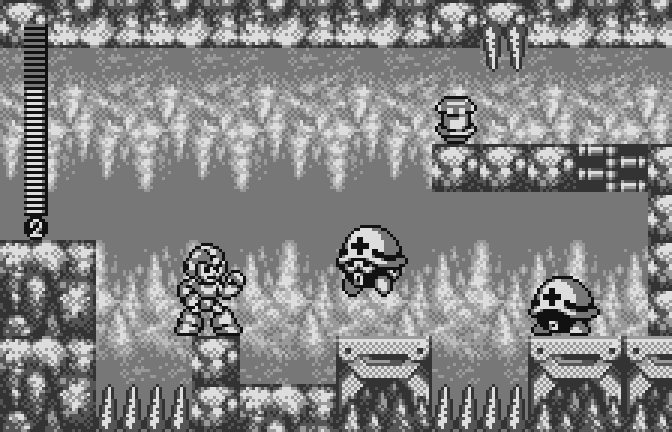
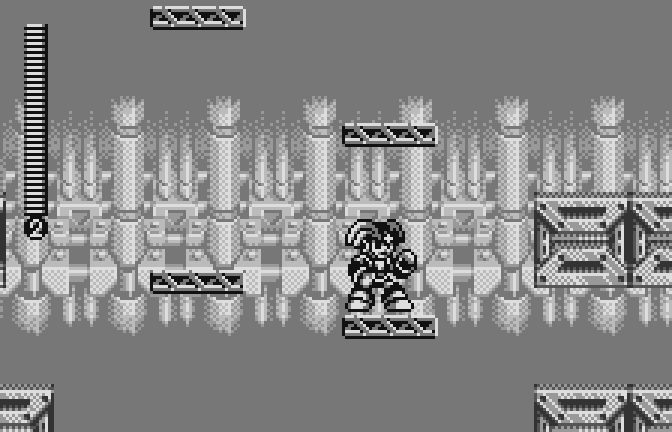
"Rockman & Forte Mirai kara no Chousensha" or "Mega Man & Bass: Challenger from the Future" is essentially an original Mega Man licensed to Bandai, then further outsourced. Being so distant from the people who had been reliably creating these games, it's naturally pretty wonky, but a valiant effort nonetheless. The villain in the game seems to be Quint, the brainwashed future Mega Man from the second Game Boy game.


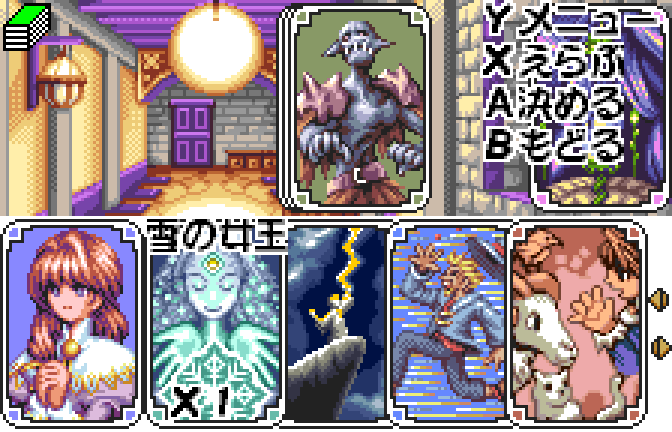
This is one of Square's Wonderswan-exclusive titles. Perhaps a spiritual predecessor to the recently announced Voice of Cards: The Isle Dragon Roars, it seems to be an RPG based in a world consisting entirely of cards. You progress the story by obtaining the cards for events. The production seems to be most closely related to SaGa. Personally, one of the games I'm most interested in on the system.


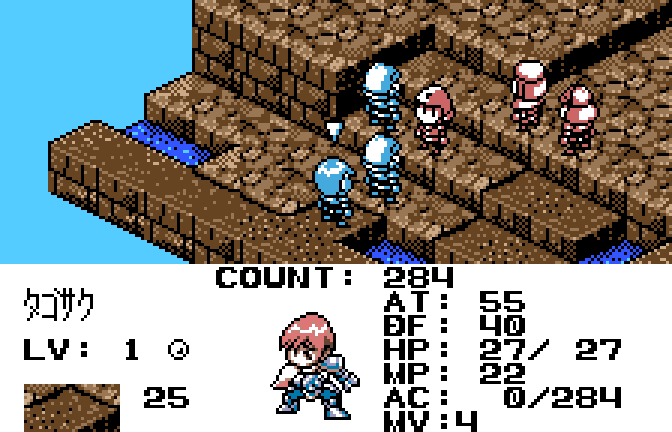
Apparently based on Dark Eyes, a PC(?) game that I can find little information on. In this setting, there are two independent human-like races that have developed in isolation in the world; the player has a choice between which group they play. As the game progresses, the two races come in contact with each other, resulting in a world war. The game seems to be structured like an RPG, but with strategy RPG battles.
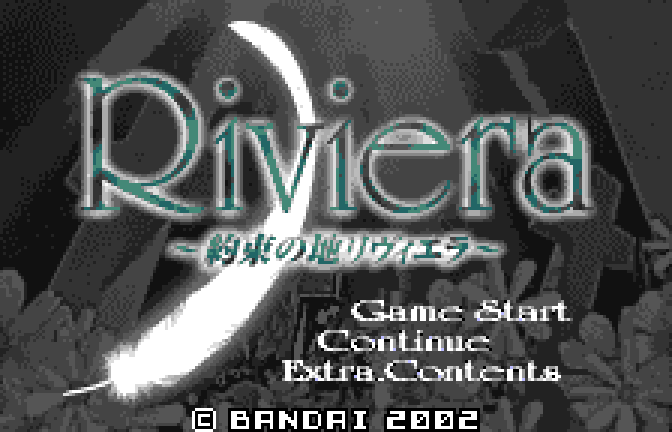
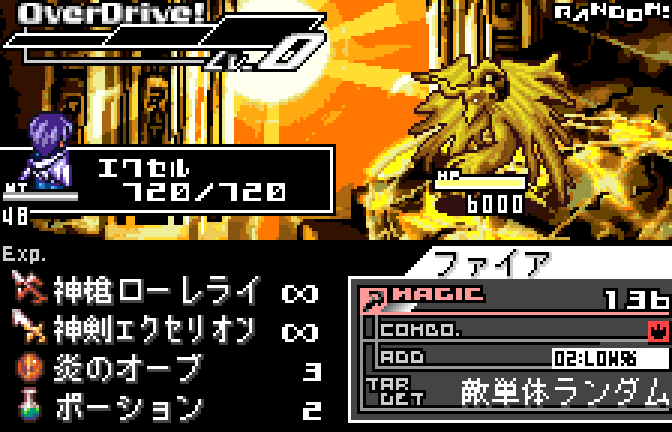

Although later ported to the Gameboy Advance and PlayStation Portable, Riviera: The Promised Land was originally a Wonderswan game. It's a JRPG distinguished by its odd, abstract mechanics, existing purely to be interesting to play. This was the beginning of Sting's "Dept. Heaven" series of the games, which are less connected by story and more by a goal of gameplay that becomes increasingly unique. Yggdra Union, Knights in the Nightmare, and Gungnir are all part of this series.
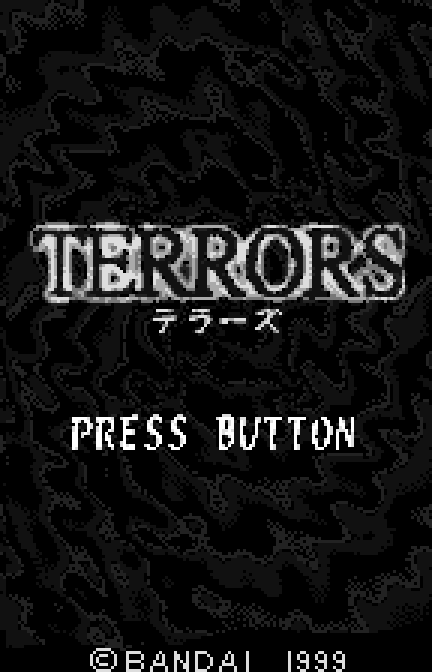

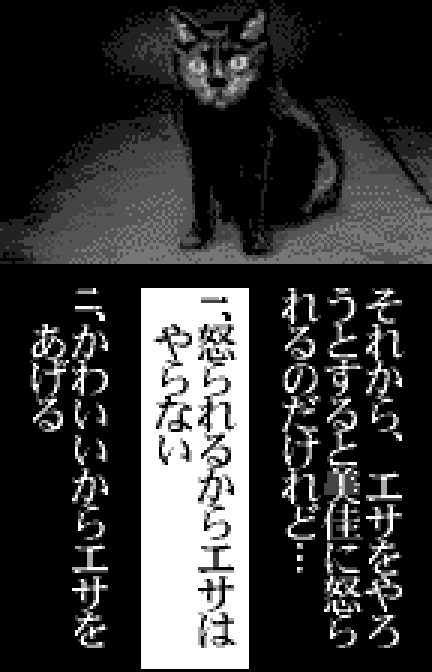
Terrors and its sequel Terrors 2 are essentially collections of horror stories, although there seems to be some branching. Photography with live actors is used in the visuals, and the text is written in more formal vertical style. This seems to be one of the more well-received games on the system, although I'm not sure if I can say why without playing it myself.
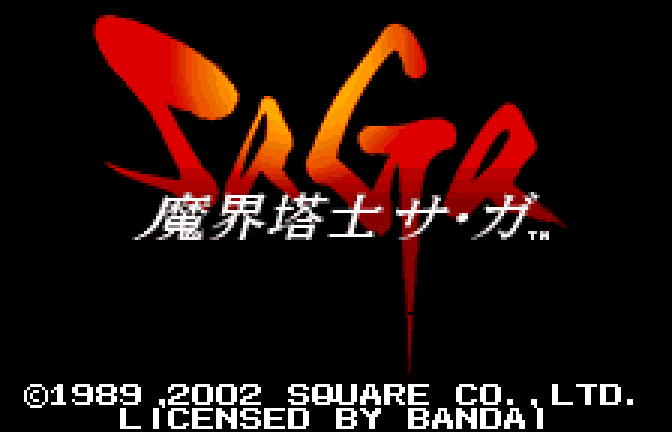
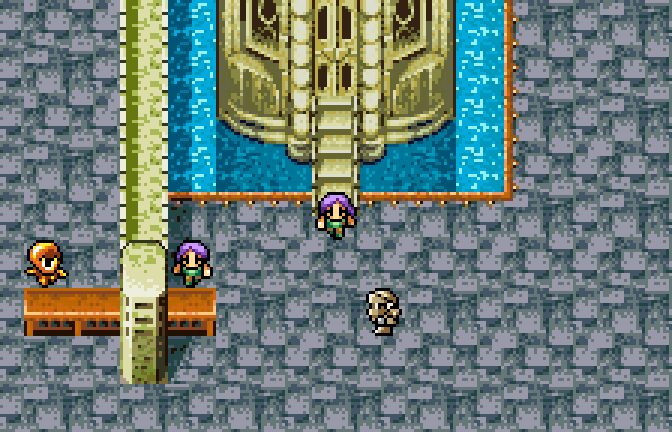
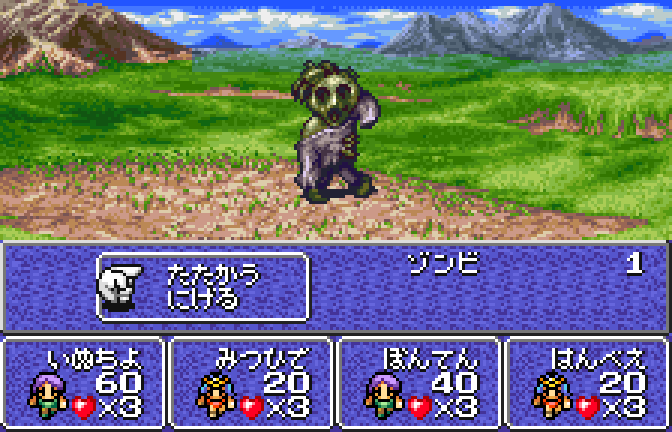
The original SaGa, which was of course localized as The Final Fantasy Legend, was released in updated form on the Wonderswan. The game includes completely redrawn SNES-style graphics, new cutscenes and features, and bug fixes (not the funny one). It also includes the original Gameboy version. This is one of the Wonderswan games that I saw the most excitement about, although it was used as a basis for a mobile version later which removed some features and added others.

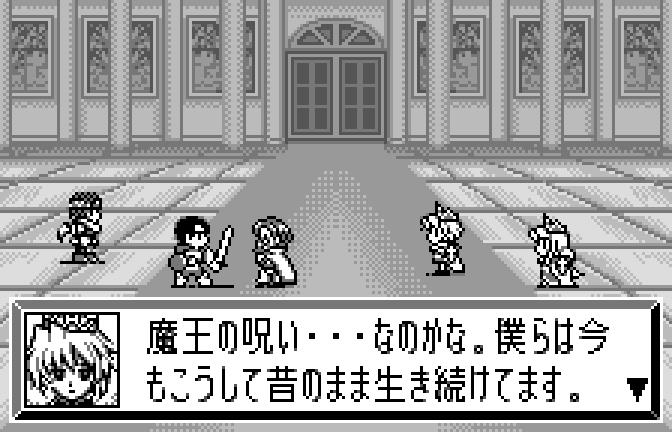
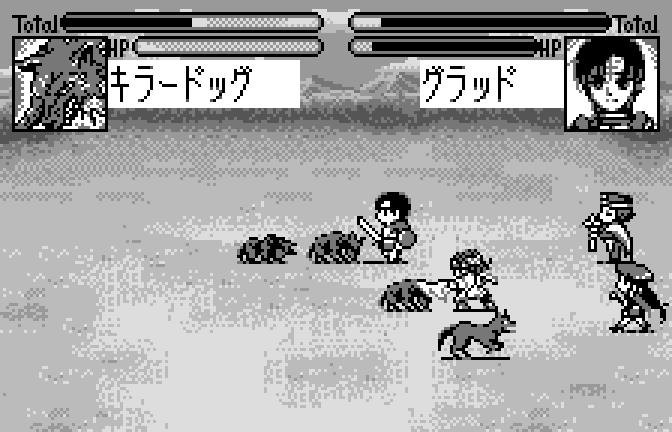
Last Stand looks like a strategy game or RPG, but as I understand it, it's more like a training/raising game with that sort of structure.The demon king has risen again, so you have to gather a team of heroes and train them to march on and defeat the enemies. Battles are automatic, so the meat of the game is instead in things like the job change system.



Namco Super Wars is strategy RPG that features characters from classic Namco games. Legend of Valkyrie, Dragon Buster, Dragon Spirit, Tower of Druaga, The Genji and the Heike Clans, and Phelios get the most focus, but it also includes Wonder Momo, Bravoman, Dig Dug, Mappy, and Famitsa.
The concept and some of the presentation seem to be inspired by the Super Robot Wars series. The gameplay seems to differ primarily by being closer to a typical JRPG, with every character's attack list using both free standard attacks and SP-costing special attacks, as well as having weapons/armour/accessories to earn. Levels have bonus objectives in the vein of many Super Robot Wars titles, although here they're solely for bonus items as far as I know.

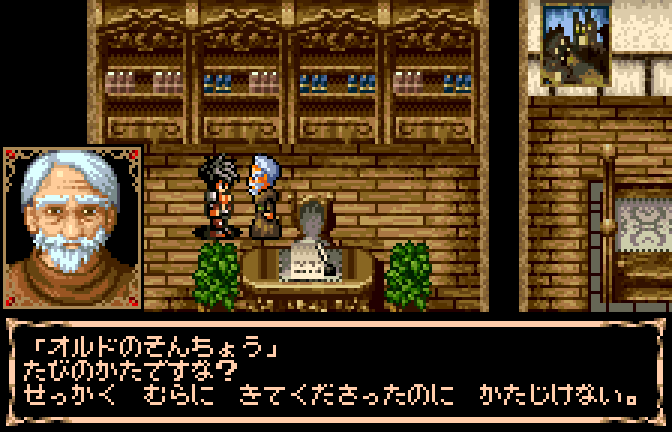

This is a fairly standard fantasy RPG with strategy-style battles. I believe the company that developed it was from South Korea, though.
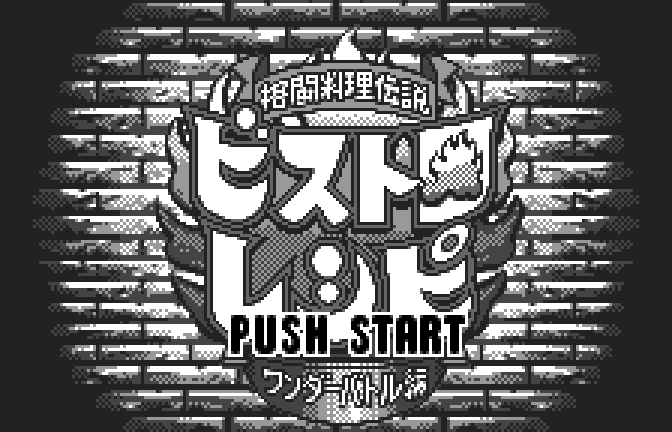
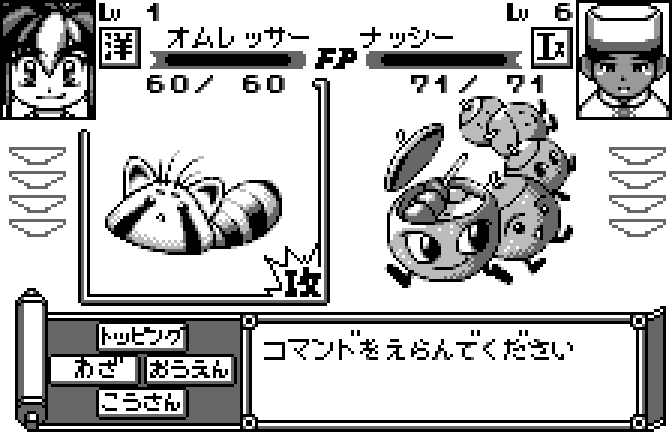
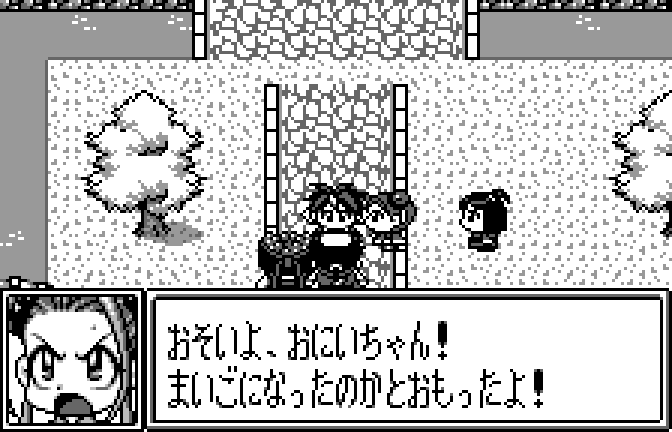
"Wonder Battle Hen" is the first game in the "Kakutou Ryouri Densetsu: Bistro Recipe" series - which you might be familiar with as "Fighting Foodons". I think the manga was the original version, but I'm seeing some claim that it was actually Banpresto's game first. At any rate, I can't find a ton of information on it; I don't believe it's the strongest of Pokemon imitators.
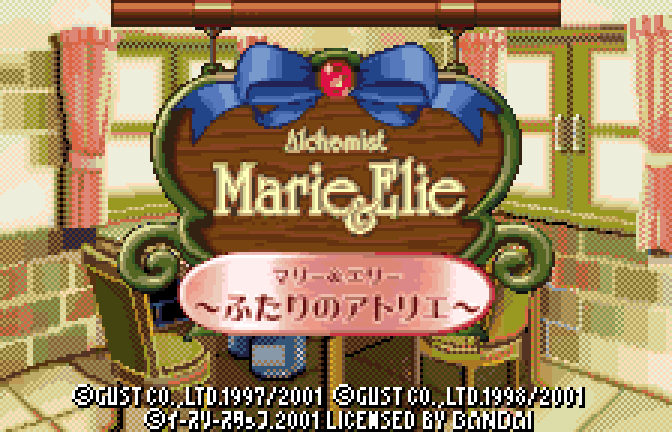
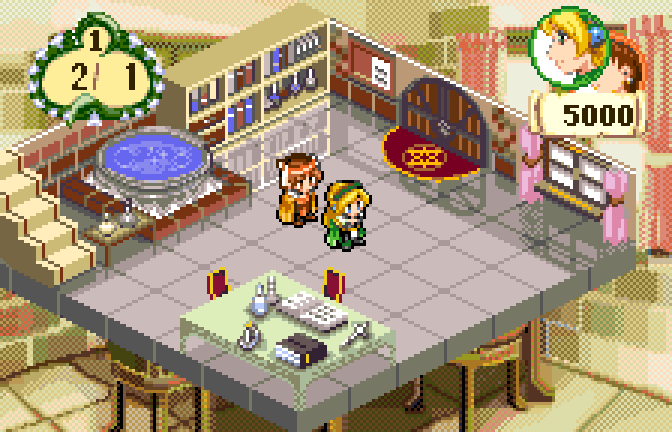

"Marie & Elie Futari no Atelier" is a spinoff of the Atelier series of JRPGs; I'm not too familiar with them, but I understand that they're known for being lighthearted and and popularizing crafting mechanics in JRPGs. In this one, Elie from the original Atelier game has had get workshop burgled, and she needs to synthesize a rare item to qualify for financial support. Marie from the second game joins in to help her. A major mechanic seems to be that you can send the two alchemists to do different things, or have them work on the same task to improve success rates and reduce the time needed.



"Dokodemo Hamster", which is something like "Hamster Anywhere", is a series of a hamster simulators that originated on the Wonderswan. I'm not seeing a ton of information on them, but they seem to be similar in gameplay to Tamagotchi, and it seems like a fair number of games as well as a manga came out in short succession. The original and third game were on the Wonderswan, but the remainder of the five games were on the original PlayStation.
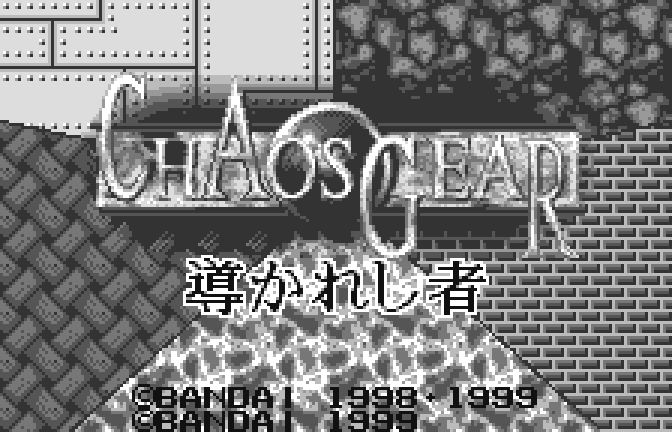
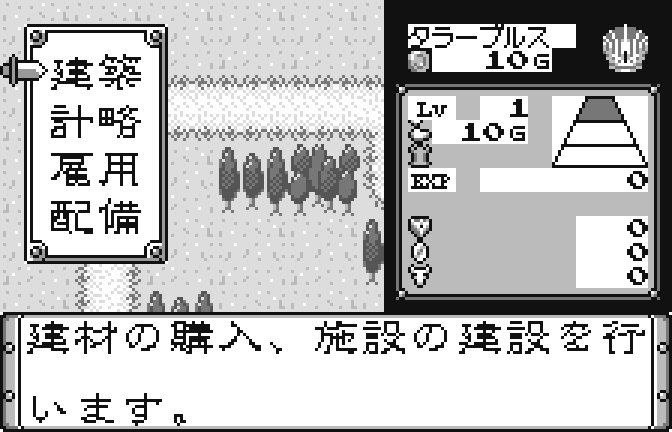

Chaos Gear is actually originally a card game, although I have trouble finding information about that one too, so I don't know how straightforward the Wonderswan adaptation "Michibika reshi mono" ("The Chosen Ones") is. At any rate, it's a strategy game where a country specializing is mechanics is at war with a country that specializes in magic. One issue that I have with it is that the visuals are super inconsistent. Sometimes you'll have pre-rendered CG animations, sometimes you'll get art straight from the cards, some of which is by Super Robot Wars mainstay Sachiko Kouno.

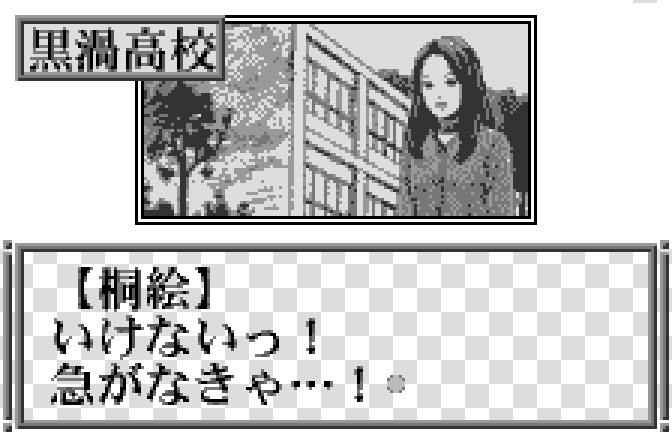

"Uzumaki: Noroi Simulation" is one of two games based on Junji Ito's horror manga Uzumaki. While the other one is a visual novel adaptation, this puts you in control of the spiral itself, trying to spread throughout the town. Not too much information on this one.
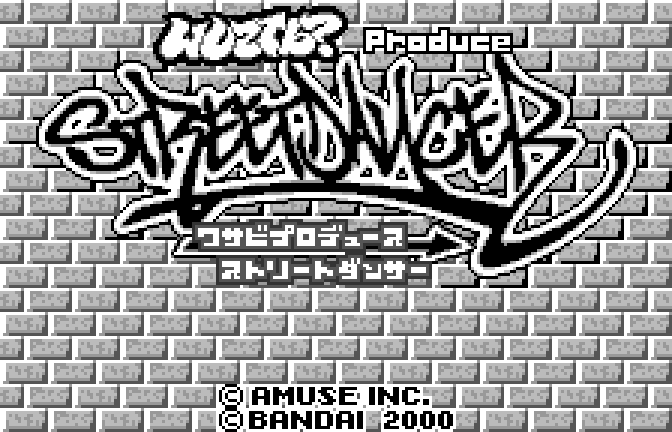

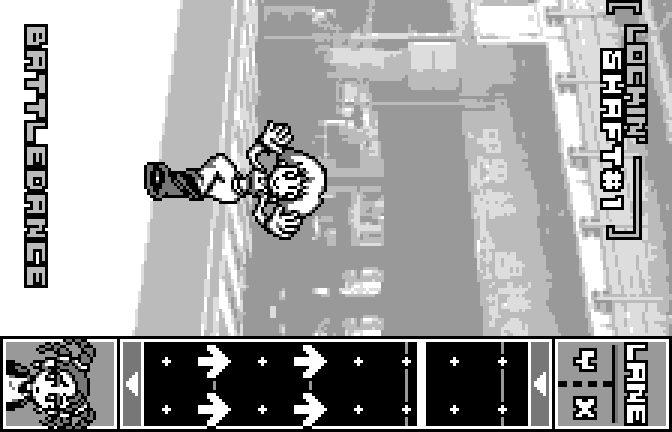
Rhythm game where the screen orientation changes depending on the music genre. Doesn't strike me as the best there is, but the animations are cute. It also sounds like wuz↑b was a real dance group, but I'm not finding information about it so I can't really confirm.
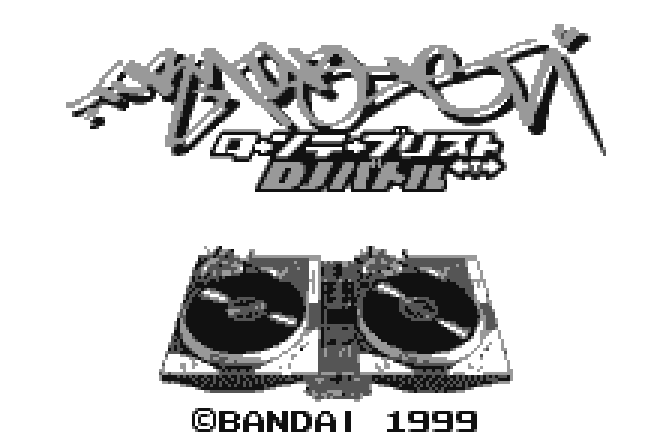
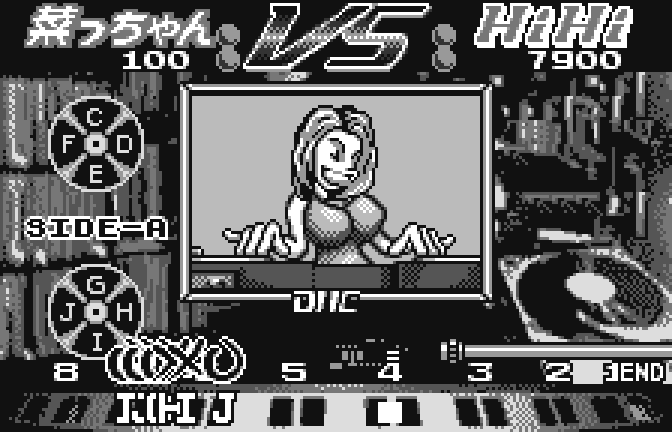
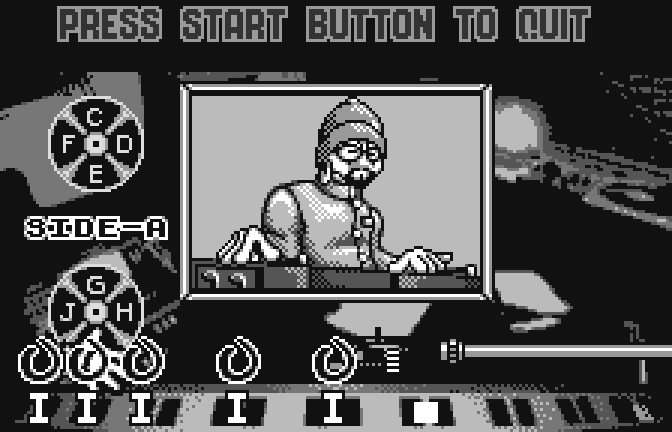
"Turntablist: DJ Battle" is another rhythm game. This one seems to uses the eight directional buttons to represent a DJ scratching two records on a pair of turntables.

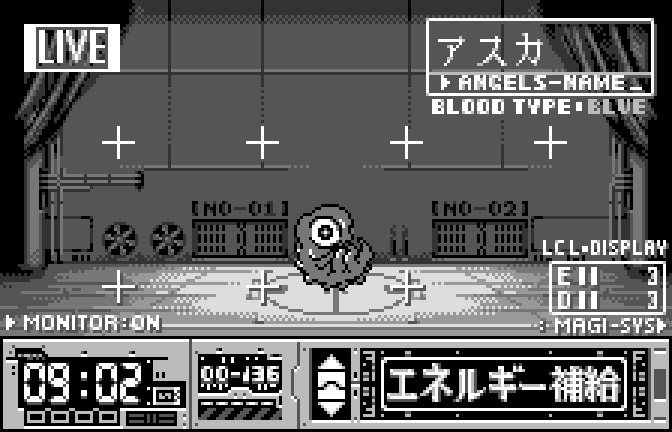

"Shito Ikusei" is a training/raising simulation game based on the Neon Genesis Evangelion anime. Similar to a Tamagotchi, the player raises a larval Angel, ultimately breaks free and fights the Evas. Besides just interacting directly with the creature, you can also wander around the NERV base and town to get items.
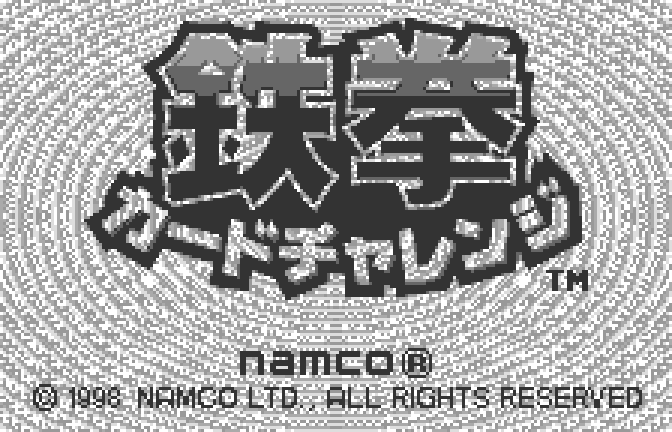
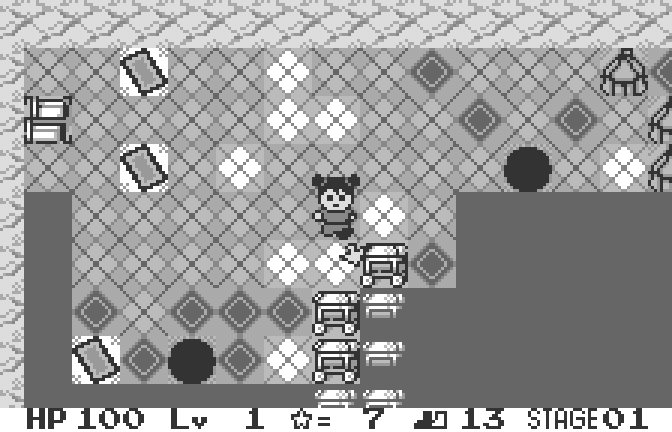
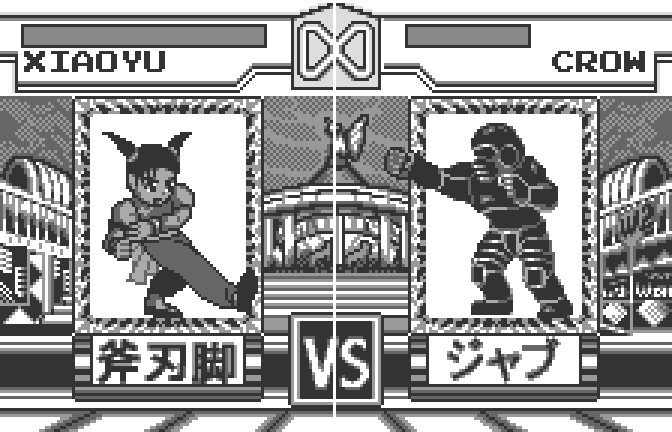
Tekken Card Challenge is a card game based primarily on Tekken 3. The player builds a deck of attack and block moves and explores dungeon-like areas to find opponents. One major issue with this game is that you don't directly pick the cards out of your hand; instead, they're chosen via roulette.
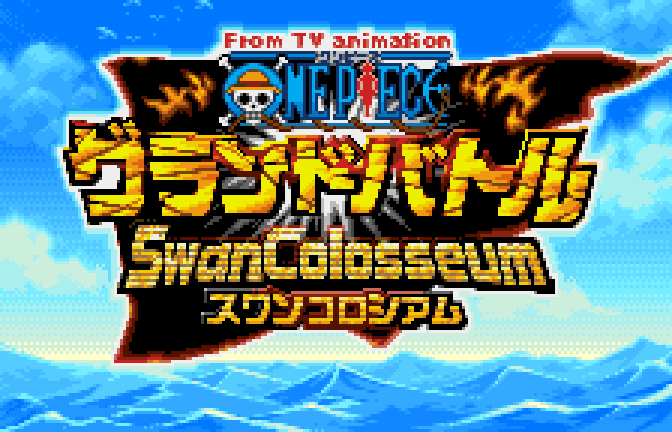
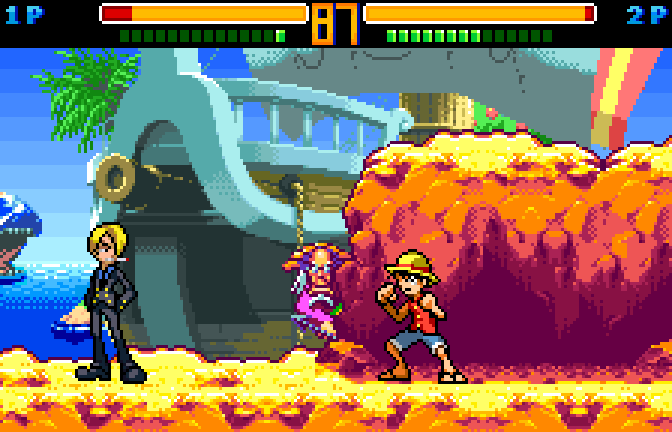
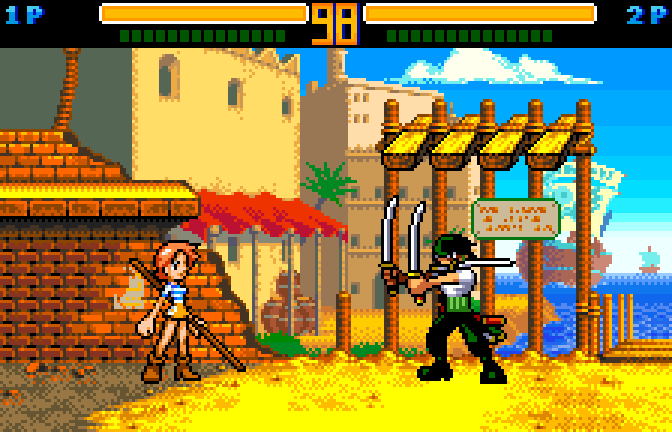
A one-on-one platform fighting game based on early One Piece. Generally closer to traditional fighting games than Smash Bros, although there are areas where you can climb up and boxes to break for powerups. The sprites remind me of what Ganbarion would later provide with Jump Superstars or Gigant Battle, but as far as I know, it's just Bandai, and the animation is actually smoother here. Every character has multiple super moves which seem to trigger small cutscenes using still full-screen images. Playable characters include Luffy, Zoro, Nami, Usopp, Sanji, Chopper, Tashigi, Smoker, Mr. 1, Mr. 2, Miss All Sunday, Crocodile, and Ace.


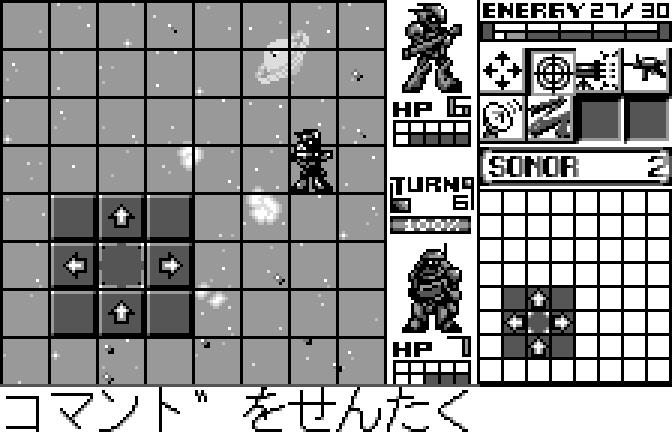
A 1-on-1 mecha strategy game. The enemy is only visible when you're adjacent to them, but you can get a rough sense of where they are using sonar. You have around 40 different units to play as with different equipment sets.

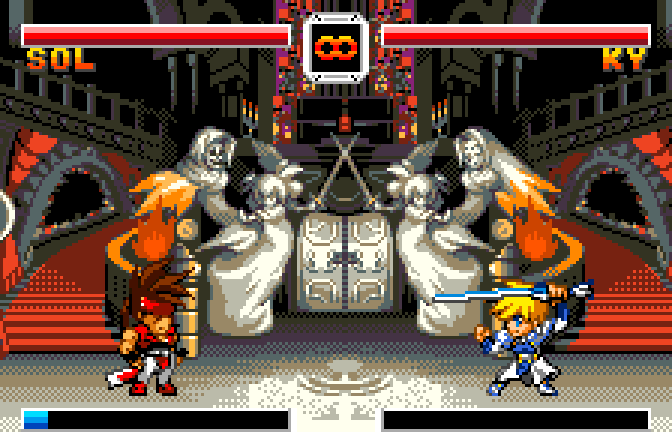
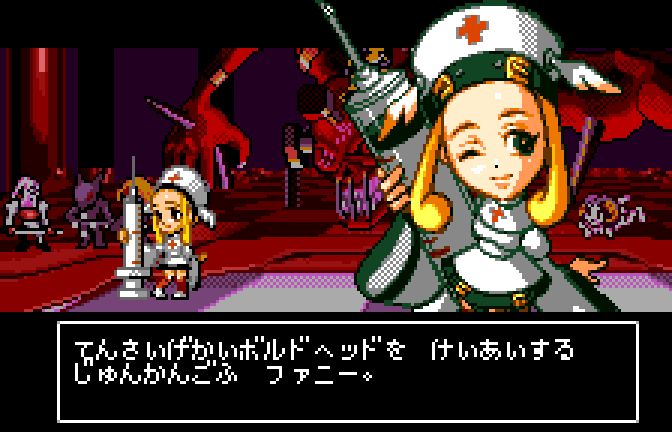
A quasi-port of Guilty Gear X, featuring similar gameplay with super deformed style characters. It also introduces a new character, Fanny, who has some relationship with and similarity to Faust. The second game adds more characters and features, including arcade and survival modes, and GG Mode versions of some characters.
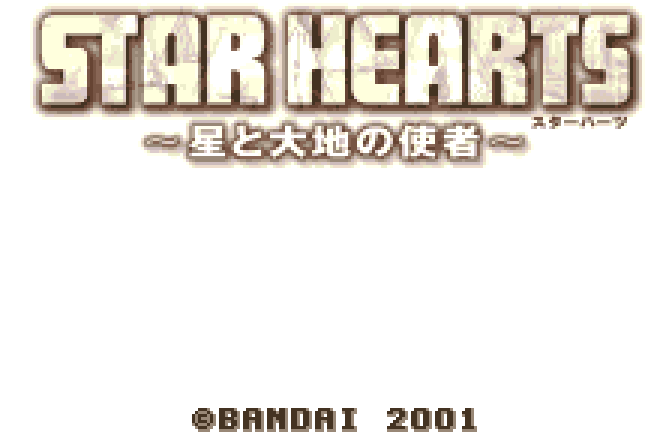

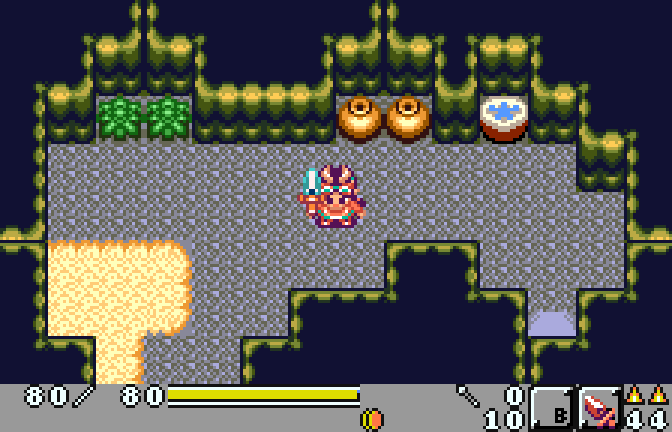
"Star Hearts Hoshi to Daichi no Shisha" or "Star Hearts: Messenger of the Stars and the Earth" is a Zelda-like game where you explore dungeons, collect equipment, and fight big bosses. It's got an aesthetic inspired by the Indigenous people of North America, which I don't think is that common, but I wonder how sensitive a depiction it is.
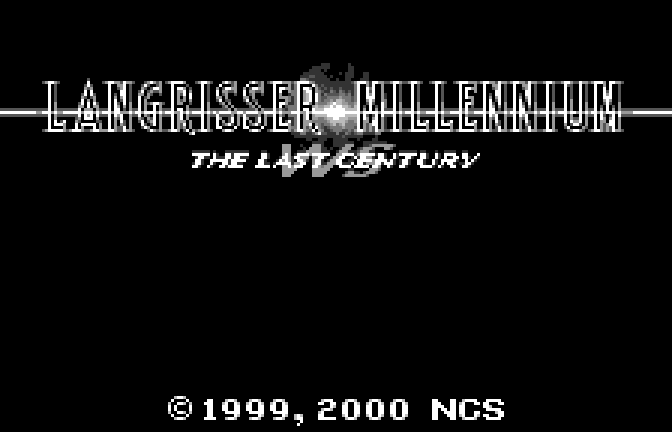
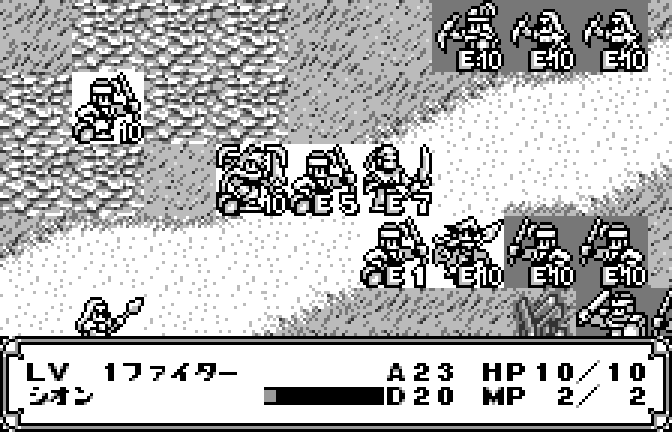
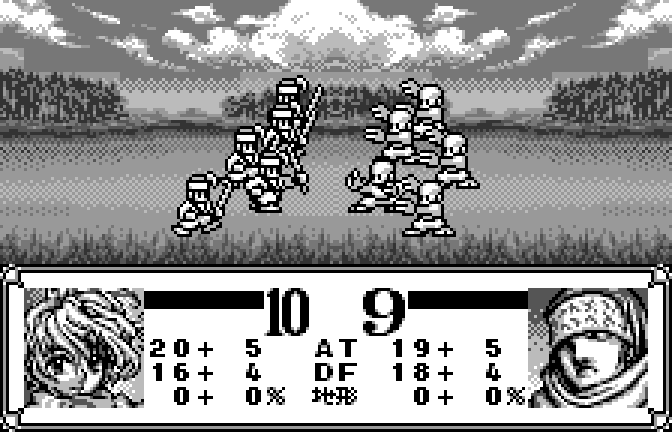
Langrisser is a long-running series of turn-based strategy RPGs, which gradually developed a focus on branching storylines that allowed players to choose the faction they wanted to support. The Dreamcast's Langrisser Millennium shifted to real time gameplay which made it unpopular with the series' fanbase, but the Wonderswan sequel instead provided the series' traditional gameplay.
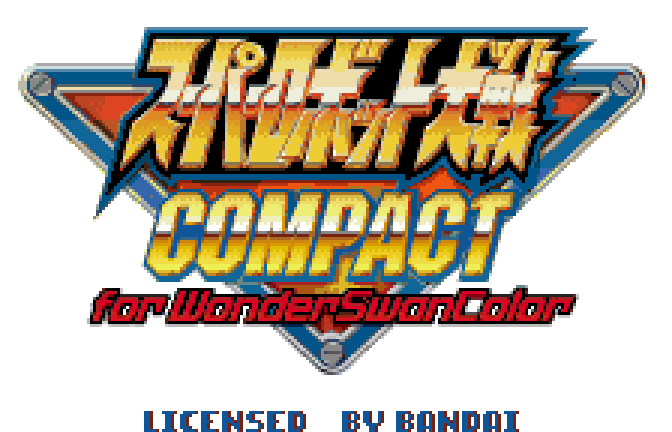
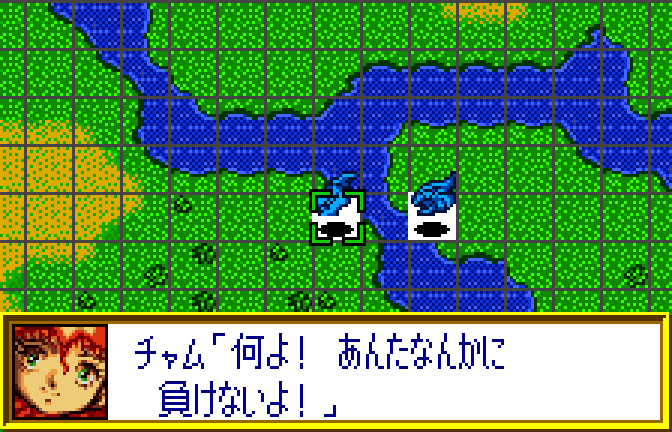

"Super Robot Wars Compact" is the first of the Super Robot Wars games released for the Wonderswan, and seemingly the most popular. Unlike other almost every other game in this series, this one features no original characters. Other quirks is that you have a lot of choice over stage order and you sometimes get units as random drops. While it originally was released in black and white, there was later a colour release.
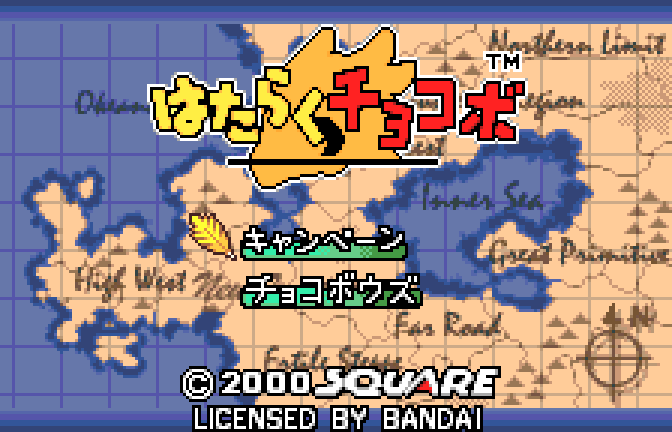


"Hataraku Chocobo" or "Working Chocobo" is another one of Square's Wonderswan exclusives. It seems like it's most likely something like a farming sim a la Harvest Moon. I think there's some kind of Chocobo capturing or breeding aspect as well. It's another one that's by SaGa staff.

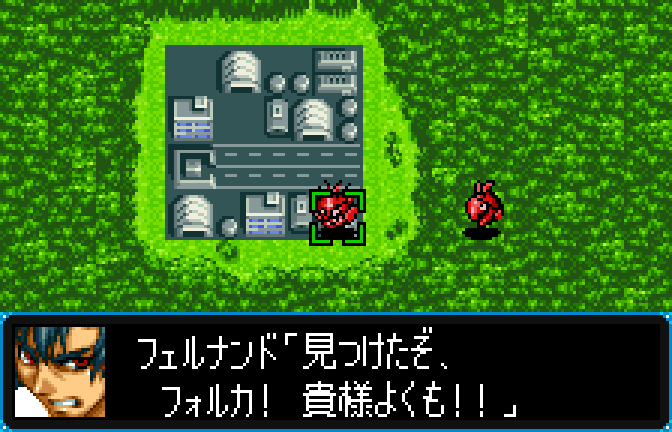
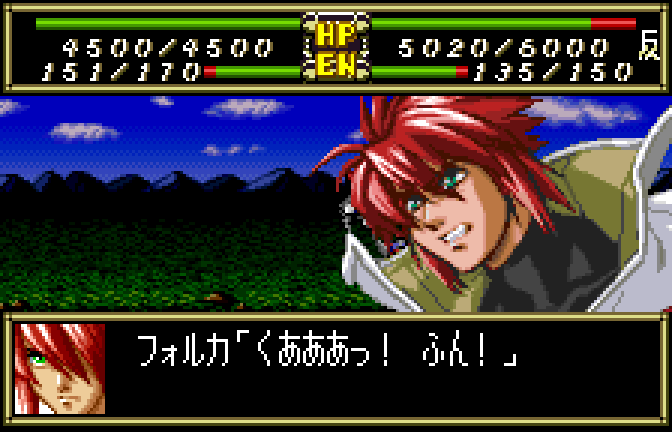
Compact 3 is the final Super Robot Wars game released on the Wonderswan. This particular one is rare and expensive, as I understand it, there weren't a whole lot of copies made. The story centers around the Shura, an extraterrestrial culture whose culture is defined around fighting for supremacy. The main character, Folka Albark, questions this lifestyle when tasked with killing his own brother after defeating him in battle. This storyline was later adapted in Original Generation Gaiden on the PS2. Compact 3 is distinctive for not having any stages set in space, as well as featuring series like Escaflowne and Betterman that aren't used in the series much.
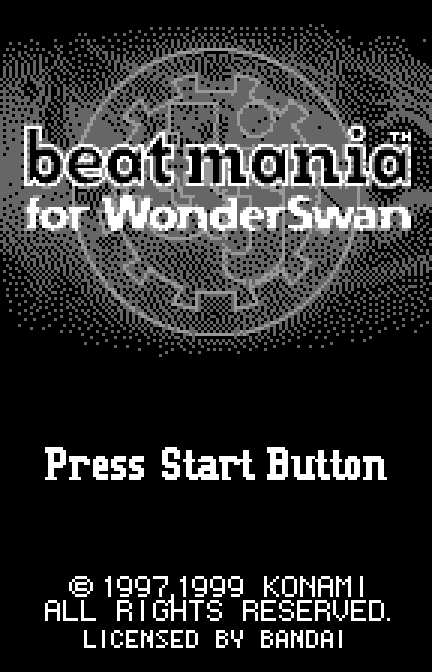
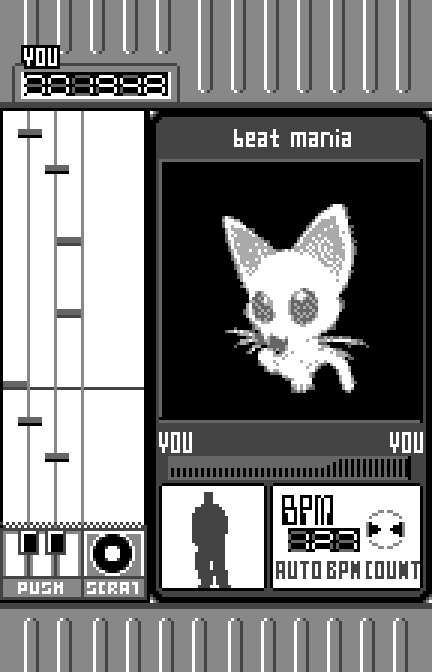

A rhythm game from Konami's prominent series; it's my understanding that this is based primarily on Beatmania 3rd Mix. Notably, the music here features full vocals and voice samples. I'm also seeing mention of the turntable control, I guess making use of the Wonderswan's unique control setup, but I'm not familiar enough with Bemani to say why it's notable.
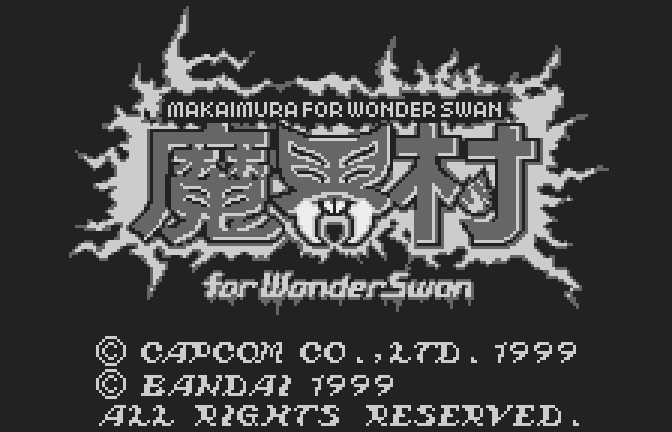


"Makaimura for Wonderswan" is apparently something of a remix game, featuring content from other games in the Ghosts 'n' Goblins series along with its own gameplay quirks.


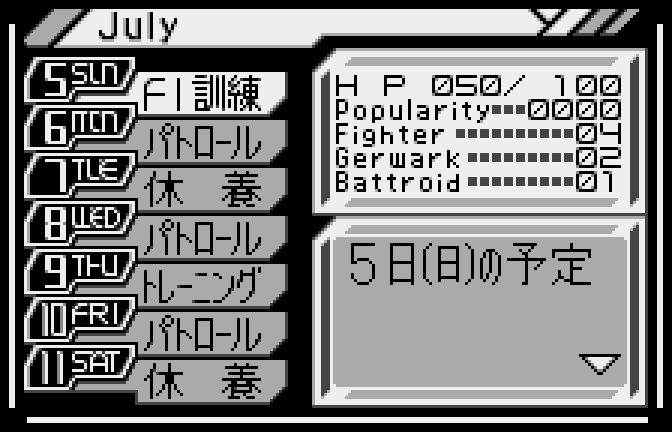
A training/raising simulation game based on Macross, although I believe the story and characters are essentially original here, albeit following the model of the original series. Set decades after the original Macross, an immigrant ship experiences a warp accident and ends up in a conflict with the Zendradi. As with other games in the genre, the gameplay largely consists of setting a training schedule, although there also seems to be combat involved. There's a love triangle in the story, and the game has multiple endings depending on who the player ends up with.
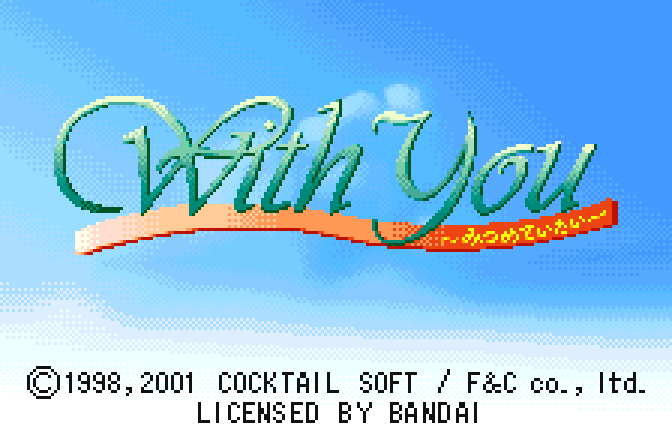
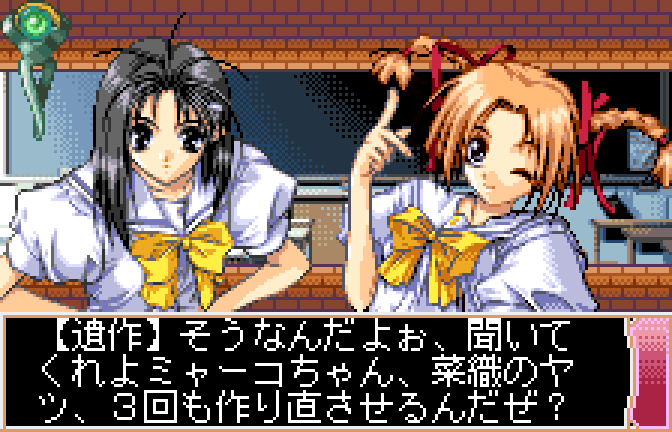
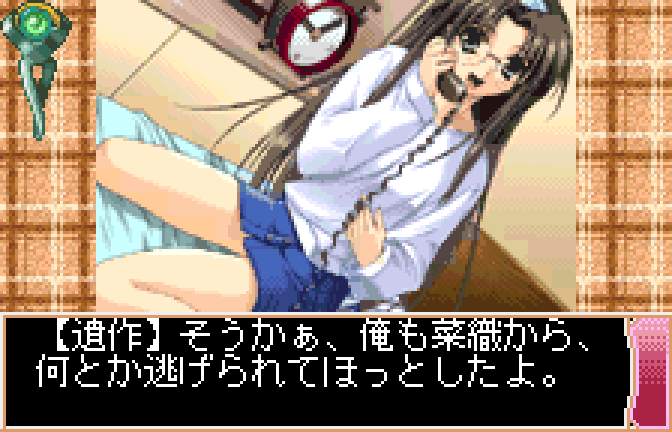
"With You Mitsumete Itai" is a port of a PC romance visual novel game wherein the main character finds themselves in a love triangle after their childhood friend returns from Myanmar.
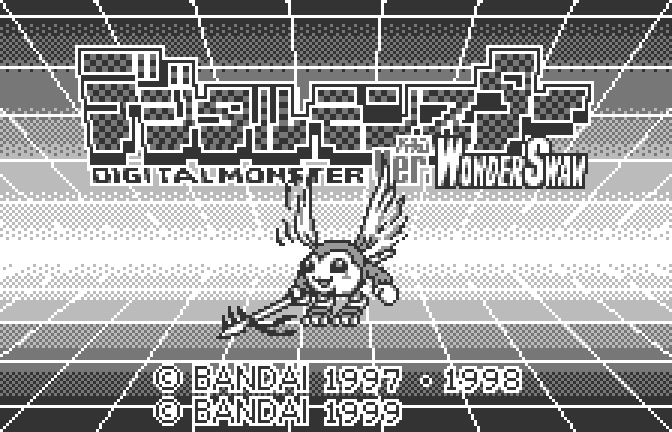

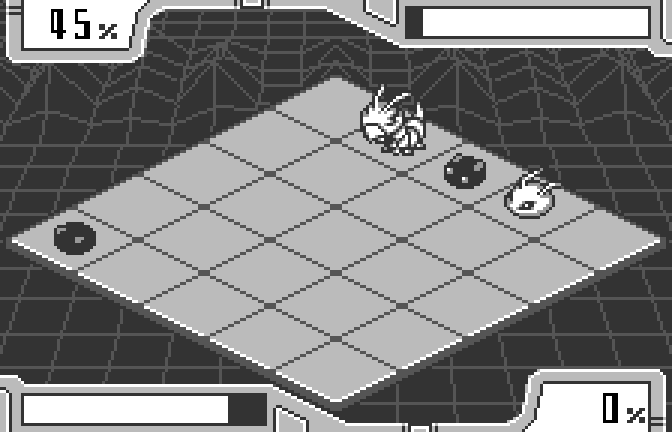
Rather than unique gameplay, Digimon Ver. Wonderswan is essentially based on the original Digimon virtual pets. However, it's significant more robust than the original toys. The player can raise multiple Digimon at once, and has access to dozens of Digimon through the evolution chains of various Digivice toy models.
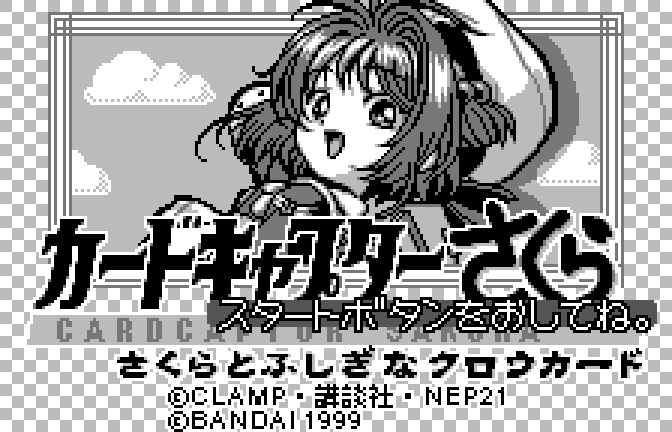

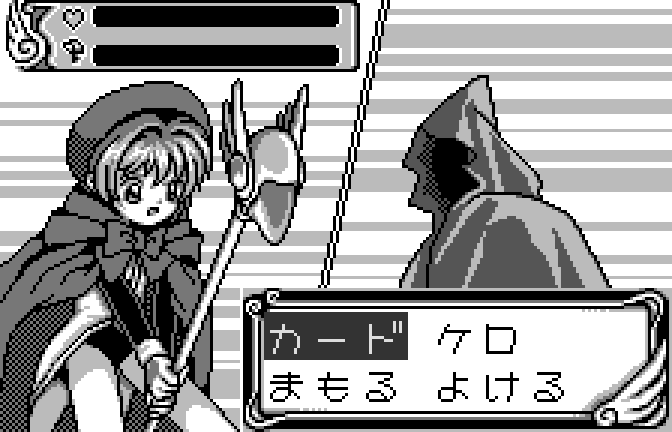
"Sakura to Fushigi na Clow Card", or "Sakura and the Mysterious Clow Cards", is an adaptation of the Cardcaptor Sakura anime. This one seems to be a combination of a training/raising simulation as well as an RPG. Rather than exploring the world, you spend the time between battle events choosing your schedule and building your stats. When you encounter and defeat a Clow Card, you add it to the list of attacks that you can carry out in battle. Apparently this game also has multiple endings, or at least a bad end that you can run into somehow.


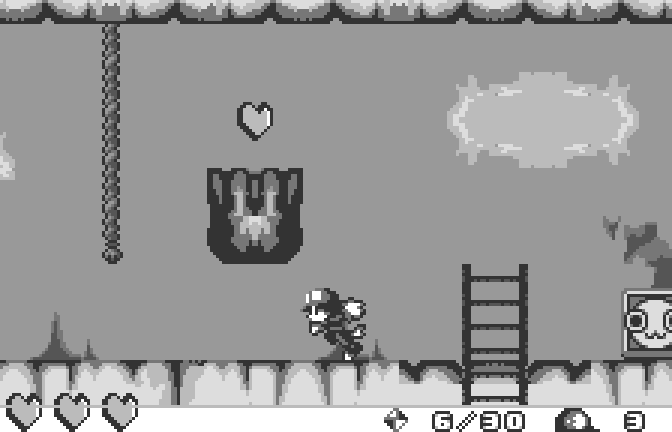
The second Klonoa game and the first fully 2D game in the series, "Kaze no Klonoa: Moonlight Museum" essentially translates the gameplay of the PS1 original to handheld form. The story has Klonoa meeting a girl who asks him to collect broken fragments of the moon.
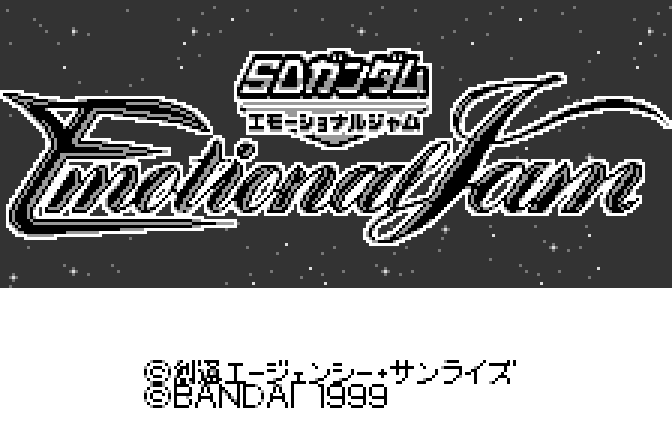
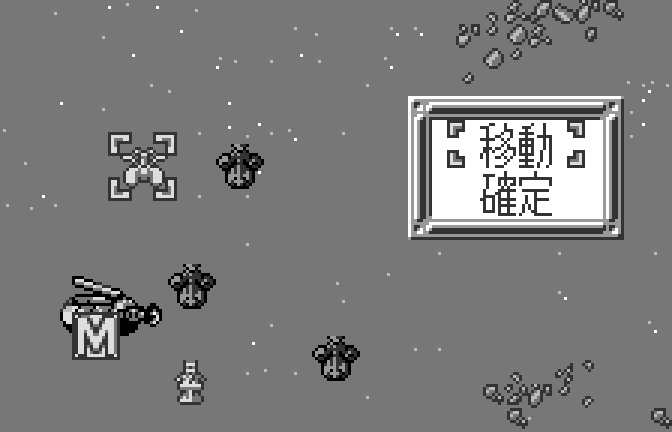
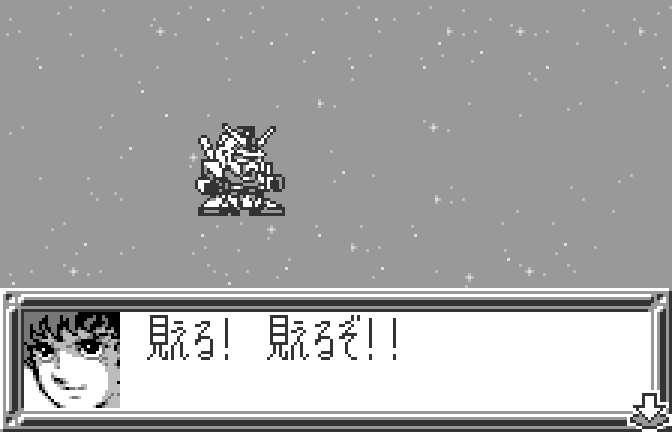
"SD Gundam: Emotional Jam" is the first of many Gundam strategy games on the Wonderswan and seems to be one of the most popular on the platform as a result. To my understand, it's something of a bridge between the more Daisenryaku / Advance Wars-like games on the SNES such as Super Gachapon World: SD Gundam X and the more collecting and combining focused G Generation series. It would later be followed by several G Generation games such as Mono Eyed Gundam.
In case you enjoyed all of the screenshots in this thread, I should let you know that they're from Refuge Tokyo. That site has screenshots from a ton of platforms, but I should note that some of those have 18+ sections; particularly the PCs, which I assume is because there's less oversight than consoles. You should see a warning before you click on one of those sections.
For those who might not be aware, the Wonderswan was a handheld that isn't quite the successor to the Game Boy. You see, when he was at Nintendo, Gunpei Yokoi was the chief engineer behind the Game Boy. But after the disastrous failure of the Virtual Boy, he left and started his own company. From there, he cooperated with Bandai to spearhead the Wonderswan, which had a similar design philosophy behind it. The Wonderswan initially followed the Game Boy Color and actually sold a few million despite not never leaving Asia; not a bad job of fighting Nintendo's monstrous handheld presence. But ultimately the Game Boy Advance led Bandai to throw in the towel.
Gunpei Yokoi tragically passed away before the system was released, but a direct tribute was made to his legacy through the puzzle game series Gunpey. In fact, the games weren't just named after him, Gunpey had been designed by Yokoi as the Wonderswan's answer to Tetris. I haven't played it myself, but they seem to be pretty well received. When I was looking up recommendations for games to get, I saw a comment from someone calling the Wonderswan "a dedicated Gunpey machine." The latest version is 2017's Gunpeyard Flower Carnival on iOS and Android.



In terms of hardware, the Wonderswan probably perceived itself as competing against the Game Boy, which may explain some of its weak points. The original Wonderswan was monochrome since Nintendo themselves had proved that colour was not a necessity for handheld gaming. Later versions of the Wonderswan soon followed that did allow for colour games while being backwards compatible with the black-and-white ones. As with the Game Boy iterations of the time, the Wonderswan does not have a screen light.
On the positive side, though, one of the immediate things you may notice about the system is that it's got a ton of buttons compared to the Game Boy. You've got two cross-shaped button arrangements to serve as D-pads, plus your A and B. Kind of like the N64 controller, the button layout was designed to be used in different orientations, letting games be either vertical or horizontal. But games were free to use all of these buttons, which naturally can open up some gameplay possibilities.
How did the system do in terms of support? There's around two hundred games for the system altogether, about a hundred each for the monochrome and colour versions. Being a Bandai handheld, Bandai is naturally the biggest supporter, and that means licensed games or games tied to multimedia projects. If you like Gundam and Digimon in particular, this may be the system for you. But they also had a major supporter in Square, who developed a lot of enhanced ports and a handful of original games for the system. These seem to be the most popular games on the system, especially the Wonderswan's version of the original SaGa / Final Fantasy Adventure.
In fact, I had the Wonderswan Color port of Final Fantasy bundled with my system. I didn't even notice that it was being included until I bought it. This port comes with SNES style updated graphics as well as various other gameplay tweaks and additions to put the game more in line with the SNES games.



Perhaps you're thinking, wait a second Thammy, this looks familiar. Isn't this the PlayStation version that was included with Final Fantasy Origins? If so, you've got a good eye, because the Wonderswan Color ports of Final Fantasy 1 and 2 were the basis for the versions in that collection.
Also notable among Wonderswan developers are the amateurs. A company called Qute created a software development kit called the Wonderwitch, which was approved by Bandai. With this kit, hobbyists could develop their own games using C or assembly. There was also a separate Wonderwitch Player which allowed someone to play these games without needing the development tools.
A few games were also released in standard form after winning game development contests. Besides being very good, these games weren't produced in large numbers, and I believe they're pretty expensive if you can find them. As such, there's some talk around them. Let's take a moment to highlight these.
One of these games originally developed through the Wonderwitch is Judgement Silversword, a vertical shooter. It's kind of simple, not even having a scrolling background, but is a constant rush of screen-filling action. You may have guessed from the name, but it's probably inspired by Radiant Silvergun, and so features a very similar system where you have different weapon types constantly available. There's also a closely related game, sometimes called a sequel, called Cardinal Sins where the player does not have to beat every level, but is tasked with optional missions to beat every level based on the seven deadly sins. Judgement Silversword and Cardinal Sins thankfully been made available in a few places now including Steam.



The other game is Dicing Knight, which I also see referred to as Dicing Knight. or Dicing Knight Period. I feel that this game feels spiritually similar to what Binding of Isaac's gameplay later provided. It looks much like the first Zelda and has the player exploring randomly generated dungeons consisting of linked single-screen rooms, but the game eschews the puzzles in favour of a pure action focus, slashing at enemies with your giant sword. It also features a number of bosses.
I think the title is probably a pun. You're not only dicing up enemies with your sword, but there are dice dropped by enemies, and the game is randomly generated.



Dicing Knight is still Wonderswan exclusive as far as I know. The developer, Aeju Murasame or "PlatineDispositif", has previously developed a bullet hell shooter called Gundemonium probably inspired by Touhou. PlatineDispositif has continued to make other Gundemonium games and other titles as recently as this year.
Aside from the Wonderwitch, other Wonderswan accessories included the programmable robot toy Wonderborg. There was also a GPS, IR communication, communication with mobile phones and Digivices, and so on.
This is perhaps more trivial than the above, but it's hard to imagine a better opportunity to share this musing, so I'll include it here. Besides the quality of the hardware and its software library, another way that gaming devices might be evaluated is on their legacy, what of them lives on after they're put on the shelf. Is there a legacy that the Wonderswan left behind?
By this measure, I think Bandai's handheld is rather quaint. While it housed some popular series, it generally didn't make them. But there is at least one set of games whose characters and story managed to far outlive the Wonderswan:




The Super Robot Wars series didn't originate on the Wonderswan, it began nearly ten years earlier on the Game Boy. From there, it began a storyline that it would build over the decade. But when the Wonderswan launched in 1999, that story had been concluded, leaving the series in a strange new territory.
Along with Alpha on the PlayStation, the Compact 2 trilogy for the Wonderswan was one of two new multi-game storylines started in 2000. Compared to the series' other storylines, Compact 2 had a pretty short run, with all three games being released over the course of a year. The games centered on Kyousuke Nambu and Excellen Browning, lovers who find themselves in the spotlight of an attack from extradimensional beings, the Einst. Kyousuke is the protagonist of the first, Excellen of the second, and they come together for the final game.
After the conclusion of the trilogy on the Wonderswan, the characters quickly began to spread. The trilogy was remade just over a year later as Super Robot Wars Impact for the PlayStation 2, not only featuring a huge number of stages due to compiling three games but also having the visuals and sound expected of a PS2 title and some expansion on the story. After that, Super Robot Wars Original Generation on the Gameboy Advance introduced a new storyline constructed as a crossover of Super Robot Wars' storylines. Kyousuke Nambu made an appearance as one of two options for the main protagonist, although the Compact 2 storyline and the Einst would not appear until the sequel a few years later.
The producer and writer of the these games, Souichirou Morizumi, proceeded to allude to this game and its characters in his later works. For example, the main characters of Namco X Capcom were designed based on Kyousuke Nambu and Excellen Browning. The characters themselves along with their mecha have continued to appear in games since, most recently 2019's Super Robot Wars DD on mobile or 2016's The Moon Dwellers for consoles.
That's about all that I'm able to provide for a real Wonderswan history lesson, but I think we can keep this lovefest going. Should I go into why I'm interested in the Wonderswan? What motivates a man into getting a handheld gaming system decades later?
Honestly, I don't remember why I'm so interested in the Wonderswan. There isn't a singular reason that I can point to, unlike a lot of my gamer dreams. I never had the chance to play out the system in person. I wasn't hyped for an international release back when the system was alive. I wasn't even particularly knowledgeable about it at first; there was a period where I mostly knew of SNK through King of the Monsters and Latin American MUGEN websites, during which I tended to confuse the Wonderswan and the Neo Geo Pocket. But I never got the same level of attachment for the Neo Geo Pocket.
I think it's because I perceived the Wonderswan existing in a certain space. Back before resources to learn Japanese were readily available and when Japanese games were more often made without an international release being the immediate target, you could go online and find the right circles where you'd uncover your Langrissers, your Romancing SaGas, your Shin Megami Tenseis, all of these things that made you imagine a whole world of gaming that you've been missing out on. Whereas I felt that the Neo Geo Pocket was dominated by handheld versions of Neo Geo games, with fighting games being the most visible, the Wonderswan seemed more mysterious to me, perhaps more filled with hitherto unknown treasures.
But there were a few specific games that I knew of even before I pierced the firmament and entered the upper nerdosphere. Basically, things that I was already a fan of that lured me to the Wonderswan. I'll go over these ones next; perhaps they would have gotten the same reaction out of you at the time.



As a long time Mega Man fan and forum guy, I believe that I found out about Mega Man Battle Network's announcement when I was on a Mega Man forum. I had seen Mega Man spinoffs in other genres, but seeing that the new series was this card collection action RPG game that didn't really resemble anything we had seen before was surprising, and perhaps a little worrying. While the Battle Network series was successful and I think it's proved itself to be good in its own right, those of us who were familiar with the platformers couldn't help but imagine what the series would have been as a platformer.
Released in between Battle Network 3 and 4, Rockman EXE WS feels like the realization of what we had imagined, a remake of Battle Network as a more typical Mega Man platformer. You jump and slide like in the classic series, but the game makes use of the Wonderswan's second D-pad to let you equip and use up to four battle chips at a time, similar to the original GBA RPG. While most of them are interpreted as one-time use items here, some such as swords are toggles that replace your basic abilities. Program Advances are also available by selecting particular chip combinations. While it's primarily a based on the original game, it uses a version of the Style Change system found in Battle Network 2 and 3 instead of elemental armors.
About a month after Rockman EXE WS, Capcom released Mega Man Network Transmission for the Gamecube which featured very similar gameplay. I think that one focused on an original story but similarly featured a large number of bosses and enemies from earlier games, and presumably it had more content. If I recall correctly, I actually got Network Transmission because of my interest in Rockman EXE WS, but I still remained more interested in Rockman EXE WS afterward.



The pictures above are from Digimon Anode Tamer, which was the counterpart to Cathode Tamer, and was later released as one cart that could choose between the two versions - I think the latter was an English only release for Hong Kong, but I'm not totally sure about that. At any rate, this strategy RPG game was part of a series starring Ryou Akiyama, later including Tag Tamers, D-1 Tamers, and Brave Tamers, which I think were all more along the lines of JRPGs.
I'm not too familiar with any of the games individually, but I was familiar with Ryou. See, Ryou had significant cameo appearances in the Digimon anime, and was notable for appearing in both Adventure 02 and Tamers despite those two being in different continuities. According to the head writer of Tamers, this was due to the existing popularity of the character in Japan.
(Damn it, Konaka. What the hell happened to you?)
Here's a summary of Ryou's story as I understand it, for those who may not have looked into it before.
Originally, Ryou lived in Odaiba along with the original DigiDestined. A few months after the battle with Myotismon, at the eve of Y2K, Ryou is in a chat room discussing the events online. There, he's recruited by Agumon and pulled into the Digital World to rescue the original DigiDestined, who have been captured. Ryou, armed with Tai's Digivice, allies with various Digimon and leads them to defeat the various resurrected foes from the original Adventure series, and ultimately Machinedramon/Kimeramon, who fuse into Millenniummon.
Later, Ryou watches the battle with Diaboromon. Depending on the anime or the games, he's either in Turkey or visiting his friend Ken Ichijouji, although the latter actually makes more sense in the anime as well as he's seen with Ken in a flashback. Regardless, Milleniummon revives in the Digital World, so a Veemon appears to Ryou along with his D-3 Digivice. Ken follows and meets his own partner, Wormmon. Unable to be defeated by a single Tamer, Ryou and Ken fight Milleniummon together. Milleniummon's body is defeated, but it attempts to spread its consciousness through infecting Ryou with Dark Spores. Ken pushes Ryou out of the way, but is infected himself, falling ill.
Ryou nurses Ken during his illness, but they find an invitation on Ken's computer for a tournament which seems to be intended for Ryou. Upon getting the invitation, Ryou is snatched back to the Digital World by one of the Digimon Sovereigns, where he is needed to attend the tournament to select the strongest Digidestined to defeat the three remaining Digimon Sovereigns, who had been brainwashed. However, upon his victory against the other DigiDestined, it's admitted that this was all a plan to train Ryou to defeat Moon=Millenniummon, the disembodied consciousness left behind after Ryou and Ken's previous victory over the physical Millenniummon. Though his trust is shattered by being manipulated, he goes on to face Moon=Millenniummon, who tells Ryou that the two are connected. Only Ryou can defeat Moon=Millenniummon, but in doing so, Ryou will also be destroyed.
Moon=Millenniummon invites Ryou to take a trip through time, and so Ryou ends up in the 1940s, when the Digital World was created by the development of the early electronic digital computers, the Atanasoff-Berry Computer (ABC) and the Electronic Numerical Integrator and Computer (ENIAC). In the past, Ryou meets his new partner, Monodramon. The time process evolves Moon=Millenniummon further into ZeedMillenniummon, who controls space-time, and who sends copies of enemies from other realities to attack Ryou and ENIAC. Unable to defeat it, Monodramon instead fuses with ZeedMillenniummon, becoming the ferocious Cyberdramon. Rather than returning to his own reality, Ryou decides to instead to be reborn in another one.
In his new reality, Ryou is a fan of the Digimon card game, and defeats Rika Nonoka in a tournament. After that, he meets again with Cyberdramon, who wants to get stronger and evolve. Ryou joins Cyberdramon in the Digital World, where he meets and joins with Takato Matsuki, Henry Wong and others. He also gains the ability to fuse with Cyberdramon to become Justimon, which he uses to help in the fight against the D-Reaper.
Later, Ryou watches the battle with Diaboromon. Depending on the anime or the games, he's either in Turkey or visiting his friend Ken Ichijouji, although the latter actually makes more sense in the anime as well as he's seen with Ken in a flashback. Regardless, Milleniummon revives in the Digital World, so a Veemon appears to Ryou along with his D-3 Digivice. Ken follows and meets his own partner, Wormmon. Unable to be defeated by a single Tamer, Ryou and Ken fight Milleniummon together. Milleniummon's body is defeated, but it attempts to spread its consciousness through infecting Ryou with Dark Spores. Ken pushes Ryou out of the way, but is infected himself, falling ill.
Ryou nurses Ken during his illness, but they find an invitation on Ken's computer for a tournament which seems to be intended for Ryou. Upon getting the invitation, Ryou is snatched back to the Digital World by one of the Digimon Sovereigns, where he is needed to attend the tournament to select the strongest Digidestined to defeat the three remaining Digimon Sovereigns, who had been brainwashed. However, upon his victory against the other DigiDestined, it's admitted that this was all a plan to train Ryou to defeat Moon=Millenniummon, the disembodied consciousness left behind after Ryou and Ken's previous victory over the physical Millenniummon. Though his trust is shattered by being manipulated, he goes on to face Moon=Millenniummon, who tells Ryou that the two are connected. Only Ryou can defeat Moon=Millenniummon, but in doing so, Ryou will also be destroyed.
Moon=Millenniummon invites Ryou to take a trip through time, and so Ryou ends up in the 1940s, when the Digital World was created by the development of the early electronic digital computers, the Atanasoff-Berry Computer (ABC) and the Electronic Numerical Integrator and Computer (ENIAC). In the past, Ryou meets his new partner, Monodramon. The time process evolves Moon=Millenniummon further into ZeedMillenniummon, who controls space-time, and who sends copies of enemies from other realities to attack Ryou and ENIAC. Unable to defeat it, Monodramon instead fuses with ZeedMillenniummon, becoming the ferocious Cyberdramon. Rather than returning to his own reality, Ryou decides to instead to be reborn in another one.
In his new reality, Ryou is a fan of the Digimon card game, and defeats Rika Nonoka in a tournament. After that, he meets again with Cyberdramon, who wants to get stronger and evolve. Ryou joins Cyberdramon in the Digital World, where he meets and joins with Takato Matsuki, Henry Wong and others. He also gains the ability to fuse with Cyberdramon to become Justimon, which he uses to help in the fight against the D-Reaper.



This is much less interesting than I'd above, I'd say, but still something I was aware of at the time. Digimon Battle Spirit is a platform fighter, hardly the best of its breed, but a pretty cute game anyway. While Digimon Battle Spirit and Digimon Battle Spirit Frontier were ported from the Wonderswan to the Gameboy Advance for international release - I don't think these ports ever released in Japan - there's an enhanced version of the original that remained in Japan and thus remained Wonderswan-only. As far as I know, it's a fairly meaty upgrade, with inclusions like Seraphimon, Orphanimon, Beelzemon, and Dukemon Crimson Mode.
These are the ones that stick out from when my weird attachment to the Wonderswan was forming so many years ago. A thousand wistful thoughts later and I had finally ordered one. But while my knowledge of the Wonderswan and its library had grown, it's not to the degree that one might hope. It was prudent that I do some research before proceeding further.
This isn't the first time I've bought games well after the end of life of their system, but I don't do it nearly so often that I'd could call myself a retro collector in good conscience. So maybe some of the concerns I faced are simply innate to the experience of hunting for old games rather than specific to the Wonderswan, but they were the issues that I faced nonetheless. One of those concerns is that a number of games on the system don't need to be found here, perhaps because they were ports from somewhere else or because the games had remakes elsewhere. Judgement Silversword's on Steam and it's not expensive, I don't gain anything by digging around to get the original cartridge. Another issue is that prices are variable. I don't think most of the things I looked at were too bad, but Super Robot Wars Compact 3 had a few more digits to it than I expected. And, of course, sometimes the things I was interested in just weren't available.
Ultimately, I decided to grab three games for now.



Kidou Senshi Gundam Giren no Yabou Tokubetsu Hen Aoki Hoshi no Hasha, which is something along the lines of "Mobile Suit Gundam: Gihren's Greed Special Edition: Conqueror of the Blue Earth". Gihren's Greed is a series of simulators that play out the canon of the original Mobile Suit Gundam series with the level of detail that you'd expect from historical simulators. Common features of the game involve multiple story routes that allow you to change the story's narrative or follow other versions like the novels, as well as selecting from different factions. Characters are pulled from all sorts of Gundam media in the setting, down to things like amusement park events. I'm a big fan of the Gihren's Greed series, so this was a big want.
At least when it debuted, Gihren's Greed was pretty lofty, perhaps not something easily translated to a handheld like this. The way that Conqueror of the Blue Earth compensates is by changing the scope of the game. You're no longer the supreme commander, but a few steps down the rung. You're only able to play as the villainous Zeon faction, but you can choose between Garma Zabi and M'Quve, whose jurisdictions are different. Besides conflict with the enemy, this adds an element of competition with your allied peers.
There are quite a few features that make this game different than others in the series, rather than simply reduced. As per the above, you have to deal with your peers, which takes the form of conferences. You'll be called for strategic decisions, and while you can take a position on them, you'll also have to pick the right types of arguments in the debate in order to get them to accept that idea. Additionally, the battle system in this is different from the rest of the series. Instead of moving attack units directly on the map, you assign them to carriers, and the carriers are the ones you directly manipulate. Some units, such as Mobile Armors, are larger, requiring you to fit them into the carrier's hanger like Tetris pieces.
The game still seems to be about as robust as expected of the series. Including loadouts and carriers, there are 64 different units on the Zeon side and 44 on the Federation side. Similarly, there are 45 named pilots on the Zeon side and 36 on the Federation side.



There isn't too much information in the usual places on the other games I got, Vaitz Blade included, so I can't say a whole lot before having played it. At first glance, I thought it was a Dragon Quest styled fantasy RPG, but it actually seems to focus on its monster capture mechanic - "Vaitz" is the name of the monsters you capture and fight alongside. A little oddity is that not all of your characters or Vaitz can act in a turn, and the ones that don't are safely relegated to the back row.
It's black and white, but it also seems to have a number of full-screen anime style stills which are nice to look at.



Blue Wing Blitz, one of a handful of Square games exclusive to the Wonderswan. This one was apparently made primarily by staff from the Front Mission team, and seems to be conceptually similar in that it's a vehicle-focused strategy RPG with customization mechanics. However, rather than robots, this one is primarily about planes. Ground units are also present, but even allies are not under player control.
I'm not too familiar with this one either, but it seems fairly complex. Besides different weapons, you also have considerations like altitude, speed, and maneuvers.
That's most of what I have to say about the system, but I did do some research on its library, so it would be a shame not to share it. Since I'll be looking at a significant chunk of the system's library here, let's treat this part of the thread as extra credit.



A platforming game where you play as some sort of cyborg beast person and run through obstacle courses. There are ten optional markers to collect, as well as powerups to gain new abilities and increased speed. Seems to be built for speedrunning; it's contextualized as a race, and you see your time at various points during and after the stage. A major annoying feature is that as you take damage, you begin to be frozen periodically with an electric crackle.



Made during the early days of Pokemon's popularity, Harobots is one of its many imitators. The gimmick with this game is that it's based off of Sunrise's anime, primarily mecha anime. Your "monster" ally is a Haro, the mascot robot from the original Gundam, who takes on the power and some of the features of mecha from these various animes to battle.
The Wonderswan game proceeded to get a number of sequels across Nintendo's handhelds.



Bokan Densetsu Buta mo Odaterya Doronbou is an RPG based primarily off of the comedy anime Yatterman, but contains content from the entire Time Bokan franchise it belongs to. You play as the Doronbo Gang, the incompetent recurring villains of the anime.
The battles in this game are naturally carried out with giant robots. Gameplay-wise, it seems to distinguish itself from other RPGs along those lines, giving you options to customize your robot and a variety of weapons for them to use.



A puzzle game. The player has to match up dice with the same face. They do this by manipulating the dice various ways; climbing on them and rolling the dice with your feet, passing from die to die, or dropping to the ground and pushing them.



"Rockman & Forte Mirai kara no Chousensha" or "Mega Man & Bass: Challenger from the Future" is essentially an original Mega Man licensed to Bandai, then further outsourced. Being so distant from the people who had been reliably creating these games, it's naturally pretty wonky, but a valiant effort nonetheless. The villain in the game seems to be Quint, the brainwashed future Mega Man from the second Game Boy game.



This is one of Square's Wonderswan-exclusive titles. Perhaps a spiritual predecessor to the recently announced Voice of Cards: The Isle Dragon Roars, it seems to be an RPG based in a world consisting entirely of cards. You progress the story by obtaining the cards for events. The production seems to be most closely related to SaGa. Personally, one of the games I'm most interested in on the system.



Apparently based on Dark Eyes, a PC(?) game that I can find little information on. In this setting, there are two independent human-like races that have developed in isolation in the world; the player has a choice between which group they play. As the game progresses, the two races come in contact with each other, resulting in a world war. The game seems to be structured like an RPG, but with strategy RPG battles.



Although later ported to the Gameboy Advance and PlayStation Portable, Riviera: The Promised Land was originally a Wonderswan game. It's a JRPG distinguished by its odd, abstract mechanics, existing purely to be interesting to play. This was the beginning of Sting's "Dept. Heaven" series of the games, which are less connected by story and more by a goal of gameplay that becomes increasingly unique. Yggdra Union, Knights in the Nightmare, and Gungnir are all part of this series.



Terrors and its sequel Terrors 2 are essentially collections of horror stories, although there seems to be some branching. Photography with live actors is used in the visuals, and the text is written in more formal vertical style. This seems to be one of the more well-received games on the system, although I'm not sure if I can say why without playing it myself.



The original SaGa, which was of course localized as The Final Fantasy Legend, was released in updated form on the Wonderswan. The game includes completely redrawn SNES-style graphics, new cutscenes and features, and bug fixes (not the funny one). It also includes the original Gameboy version. This is one of the Wonderswan games that I saw the most excitement about, although it was used as a basis for a mobile version later which removed some features and added others.



Last Stand looks like a strategy game or RPG, but as I understand it, it's more like a training/raising game with that sort of structure.The demon king has risen again, so you have to gather a team of heroes and train them to march on and defeat the enemies. Battles are automatic, so the meat of the game is instead in things like the job change system.



Namco Super Wars is strategy RPG that features characters from classic Namco games. Legend of Valkyrie, Dragon Buster, Dragon Spirit, Tower of Druaga, The Genji and the Heike Clans, and Phelios get the most focus, but it also includes Wonder Momo, Bravoman, Dig Dug, Mappy, and Famitsa.
The concept and some of the presentation seem to be inspired by the Super Robot Wars series. The gameplay seems to differ primarily by being closer to a typical JRPG, with every character's attack list using both free standard attacks and SP-costing special attacks, as well as having weapons/armour/accessories to earn. Levels have bonus objectives in the vein of many Super Robot Wars titles, although here they're solely for bonus items as far as I know.



This is a fairly standard fantasy RPG with strategy-style battles. I believe the company that developed it was from South Korea, though.



"Wonder Battle Hen" is the first game in the "Kakutou Ryouri Densetsu: Bistro Recipe" series - which you might be familiar with as "Fighting Foodons". I think the manga was the original version, but I'm seeing some claim that it was actually Banpresto's game first. At any rate, I can't find a ton of information on it; I don't believe it's the strongest of Pokemon imitators.



"Marie & Elie Futari no Atelier" is a spinoff of the Atelier series of JRPGs; I'm not too familiar with them, but I understand that they're known for being lighthearted and and popularizing crafting mechanics in JRPGs. In this one, Elie from the original Atelier game has had get workshop burgled, and she needs to synthesize a rare item to qualify for financial support. Marie from the second game joins in to help her. A major mechanic seems to be that you can send the two alchemists to do different things, or have them work on the same task to improve success rates and reduce the time needed.



"Dokodemo Hamster", which is something like "Hamster Anywhere", is a series of a hamster simulators that originated on the Wonderswan. I'm not seeing a ton of information on them, but they seem to be similar in gameplay to Tamagotchi, and it seems like a fair number of games as well as a manga came out in short succession. The original and third game were on the Wonderswan, but the remainder of the five games were on the original PlayStation.



Chaos Gear is actually originally a card game, although I have trouble finding information about that one too, so I don't know how straightforward the Wonderswan adaptation "Michibika reshi mono" ("The Chosen Ones") is. At any rate, it's a strategy game where a country specializing is mechanics is at war with a country that specializes in magic. One issue that I have with it is that the visuals are super inconsistent. Sometimes you'll have pre-rendered CG animations, sometimes you'll get art straight from the cards, some of which is by Super Robot Wars mainstay Sachiko Kouno.



"Uzumaki: Noroi Simulation" is one of two games based on Junji Ito's horror manga Uzumaki. While the other one is a visual novel adaptation, this puts you in control of the spiral itself, trying to spread throughout the town. Not too much information on this one.



Rhythm game where the screen orientation changes depending on the music genre. Doesn't strike me as the best there is, but the animations are cute. It also sounds like wuz↑b was a real dance group, but I'm not finding information about it so I can't really confirm.



"Turntablist: DJ Battle" is another rhythm game. This one seems to uses the eight directional buttons to represent a DJ scratching two records on a pair of turntables.



"Shito Ikusei" is a training/raising simulation game based on the Neon Genesis Evangelion anime. Similar to a Tamagotchi, the player raises a larval Angel, ultimately breaks free and fights the Evas. Besides just interacting directly with the creature, you can also wander around the NERV base and town to get items.



Tekken Card Challenge is a card game based primarily on Tekken 3. The player builds a deck of attack and block moves and explores dungeon-like areas to find opponents. One major issue with this game is that you don't directly pick the cards out of your hand; instead, they're chosen via roulette.



A one-on-one platform fighting game based on early One Piece. Generally closer to traditional fighting games than Smash Bros, although there are areas where you can climb up and boxes to break for powerups. The sprites remind me of what Ganbarion would later provide with Jump Superstars or Gigant Battle, but as far as I know, it's just Bandai, and the animation is actually smoother here. Every character has multiple super moves which seem to trigger small cutscenes using still full-screen images. Playable characters include Luffy, Zoro, Nami, Usopp, Sanji, Chopper, Tashigi, Smoker, Mr. 1, Mr. 2, Miss All Sunday, Crocodile, and Ace.



A 1-on-1 mecha strategy game. The enemy is only visible when you're adjacent to them, but you can get a rough sense of where they are using sonar. You have around 40 different units to play as with different equipment sets.



A quasi-port of Guilty Gear X, featuring similar gameplay with super deformed style characters. It also introduces a new character, Fanny, who has some relationship with and similarity to Faust. The second game adds more characters and features, including arcade and survival modes, and GG Mode versions of some characters.



"Star Hearts Hoshi to Daichi no Shisha" or "Star Hearts: Messenger of the Stars and the Earth" is a Zelda-like game where you explore dungeons, collect equipment, and fight big bosses. It's got an aesthetic inspired by the Indigenous people of North America, which I don't think is that common, but I wonder how sensitive a depiction it is.



Langrisser is a long-running series of turn-based strategy RPGs, which gradually developed a focus on branching storylines that allowed players to choose the faction they wanted to support. The Dreamcast's Langrisser Millennium shifted to real time gameplay which made it unpopular with the series' fanbase, but the Wonderswan sequel instead provided the series' traditional gameplay.



"Super Robot Wars Compact" is the first of the Super Robot Wars games released for the Wonderswan, and seemingly the most popular. Unlike other almost every other game in this series, this one features no original characters. Other quirks is that you have a lot of choice over stage order and you sometimes get units as random drops. While it originally was released in black and white, there was later a colour release.



"Hataraku Chocobo" or "Working Chocobo" is another one of Square's Wonderswan exclusives. It seems like it's most likely something like a farming sim a la Harvest Moon. I think there's some kind of Chocobo capturing or breeding aspect as well. It's another one that's by SaGa staff.



Compact 3 is the final Super Robot Wars game released on the Wonderswan. This particular one is rare and expensive, as I understand it, there weren't a whole lot of copies made. The story centers around the Shura, an extraterrestrial culture whose culture is defined around fighting for supremacy. The main character, Folka Albark, questions this lifestyle when tasked with killing his own brother after defeating him in battle. This storyline was later adapted in Original Generation Gaiden on the PS2. Compact 3 is distinctive for not having any stages set in space, as well as featuring series like Escaflowne and Betterman that aren't used in the series much.



A rhythm game from Konami's prominent series; it's my understanding that this is based primarily on Beatmania 3rd Mix. Notably, the music here features full vocals and voice samples. I'm also seeing mention of the turntable control, I guess making use of the Wonderswan's unique control setup, but I'm not familiar enough with Bemani to say why it's notable.



"Makaimura for Wonderswan" is apparently something of a remix game, featuring content from other games in the Ghosts 'n' Goblins series along with its own gameplay quirks.



A training/raising simulation game based on Macross, although I believe the story and characters are essentially original here, albeit following the model of the original series. Set decades after the original Macross, an immigrant ship experiences a warp accident and ends up in a conflict with the Zendradi. As with other games in the genre, the gameplay largely consists of setting a training schedule, although there also seems to be combat involved. There's a love triangle in the story, and the game has multiple endings depending on who the player ends up with.



"With You Mitsumete Itai" is a port of a PC romance visual novel game wherein the main character finds themselves in a love triangle after their childhood friend returns from Myanmar.



Rather than unique gameplay, Digimon Ver. Wonderswan is essentially based on the original Digimon virtual pets. However, it's significant more robust than the original toys. The player can raise multiple Digimon at once, and has access to dozens of Digimon through the evolution chains of various Digivice toy models.



"Sakura to Fushigi na Clow Card", or "Sakura and the Mysterious Clow Cards", is an adaptation of the Cardcaptor Sakura anime. This one seems to be a combination of a training/raising simulation as well as an RPG. Rather than exploring the world, you spend the time between battle events choosing your schedule and building your stats. When you encounter and defeat a Clow Card, you add it to the list of attacks that you can carry out in battle. Apparently this game also has multiple endings, or at least a bad end that you can run into somehow.



The second Klonoa game and the first fully 2D game in the series, "Kaze no Klonoa: Moonlight Museum" essentially translates the gameplay of the PS1 original to handheld form. The story has Klonoa meeting a girl who asks him to collect broken fragments of the moon.



"SD Gundam: Emotional Jam" is the first of many Gundam strategy games on the Wonderswan and seems to be one of the most popular on the platform as a result. To my understand, it's something of a bridge between the more Daisenryaku / Advance Wars-like games on the SNES such as Super Gachapon World: SD Gundam X and the more collecting and combining focused G Generation series. It would later be followed by several G Generation games such as Mono Eyed Gundam.
In case you enjoyed all of the screenshots in this thread, I should let you know that they're from Refuge Tokyo. That site has screenshots from a ton of platforms, but I should note that some of those have 18+ sections; particularly the PCs, which I assume is because there's less oversight than consoles. You should see a warning before you click on one of those sections.
Last edited:





